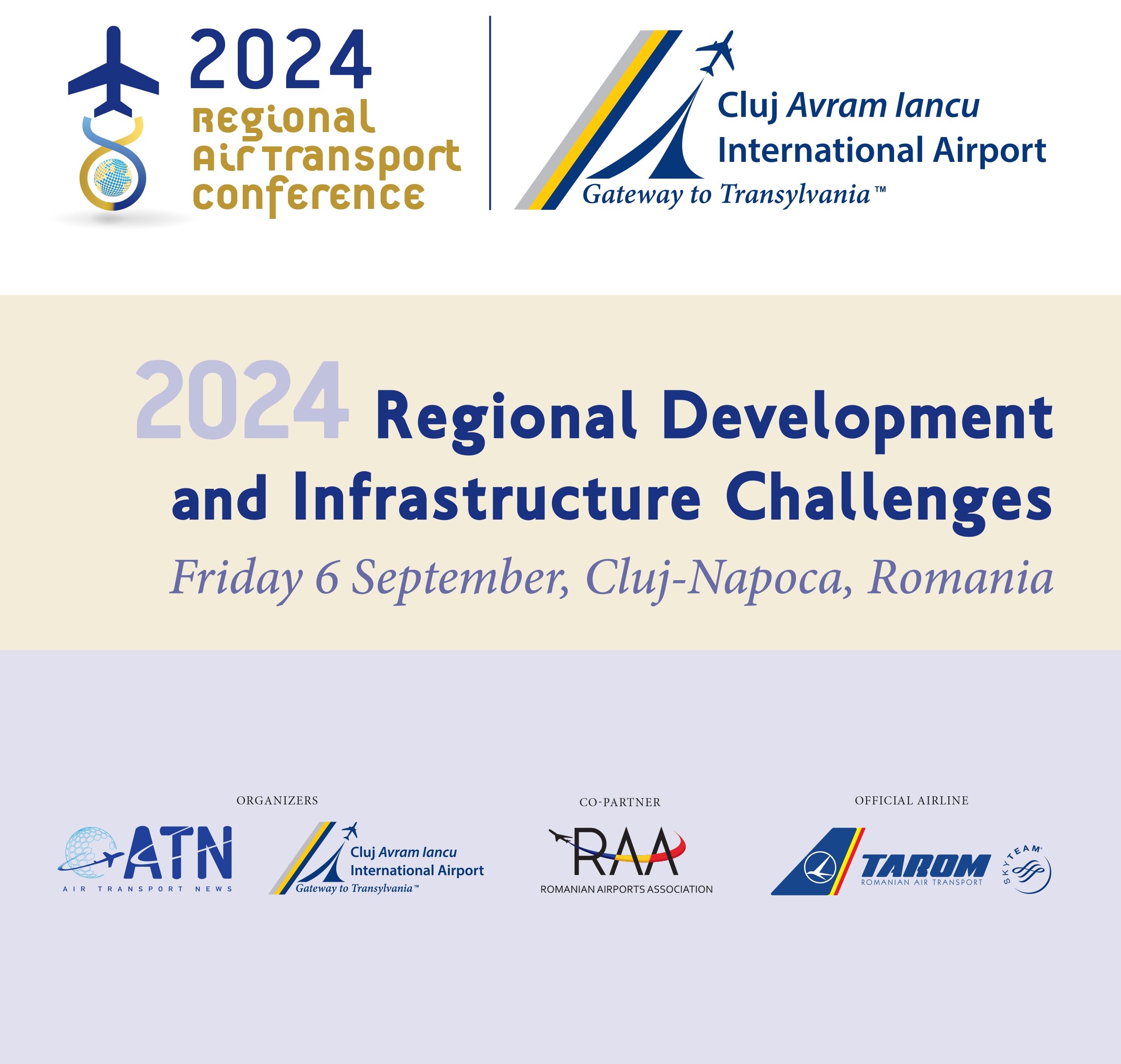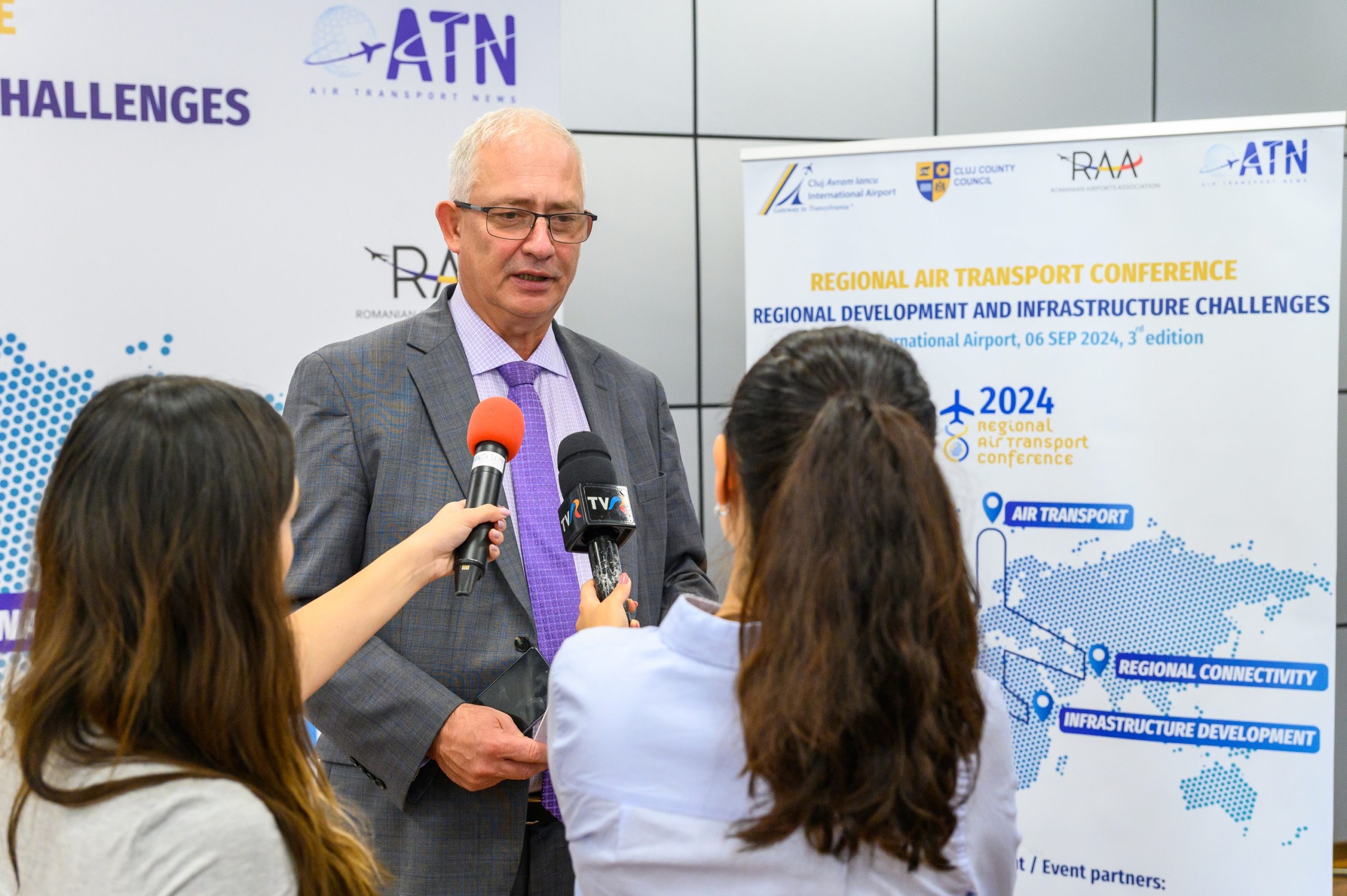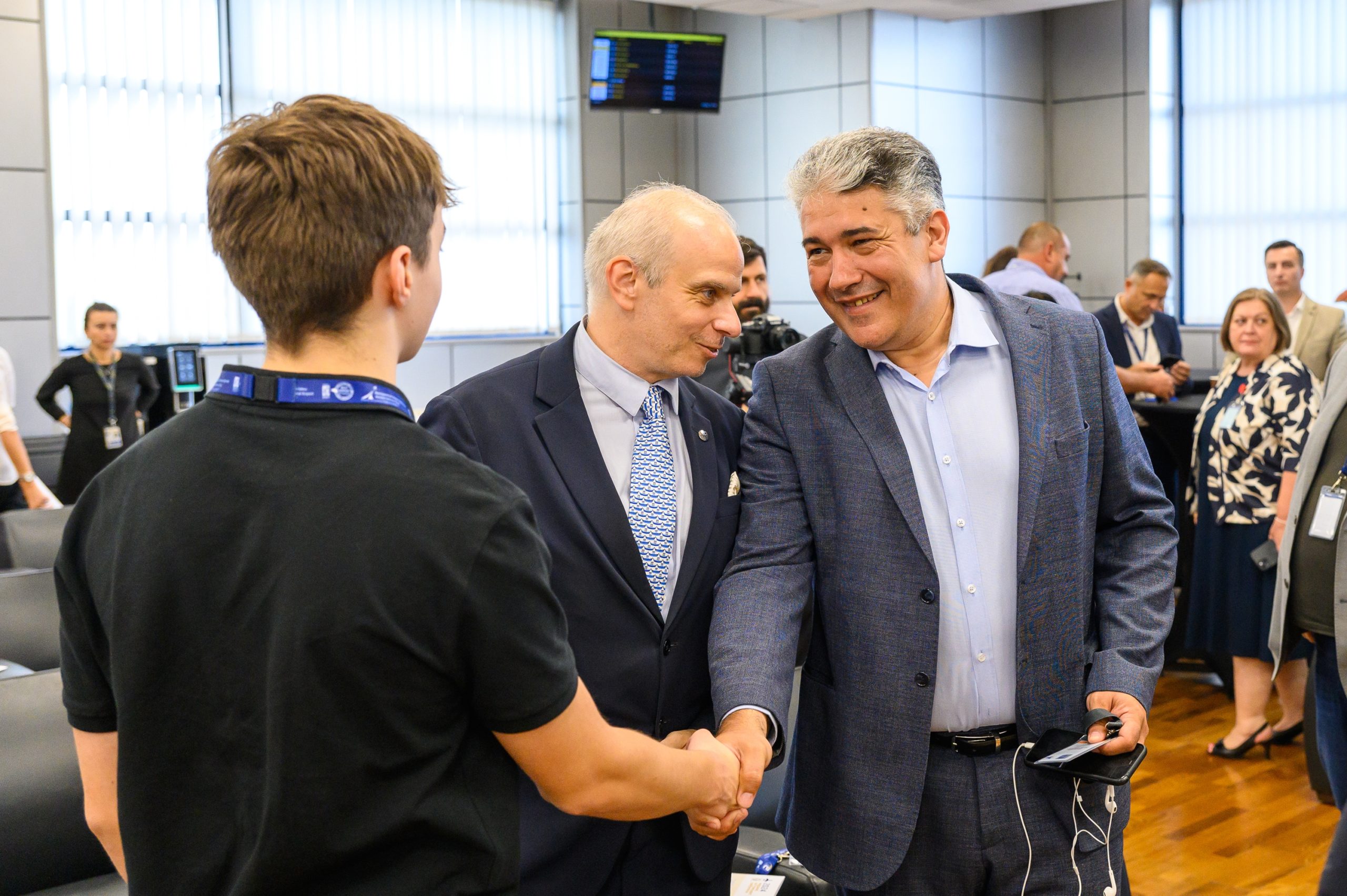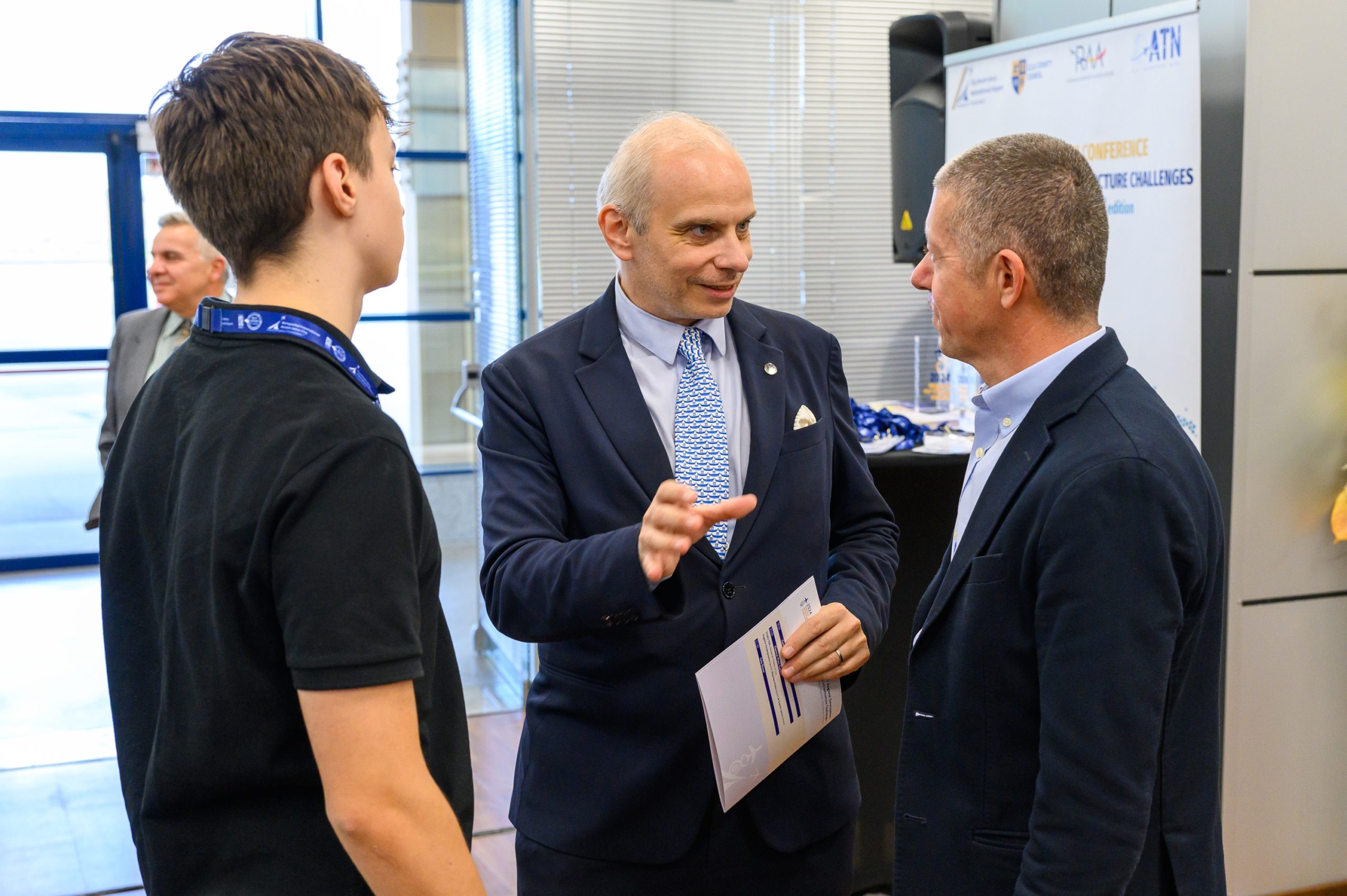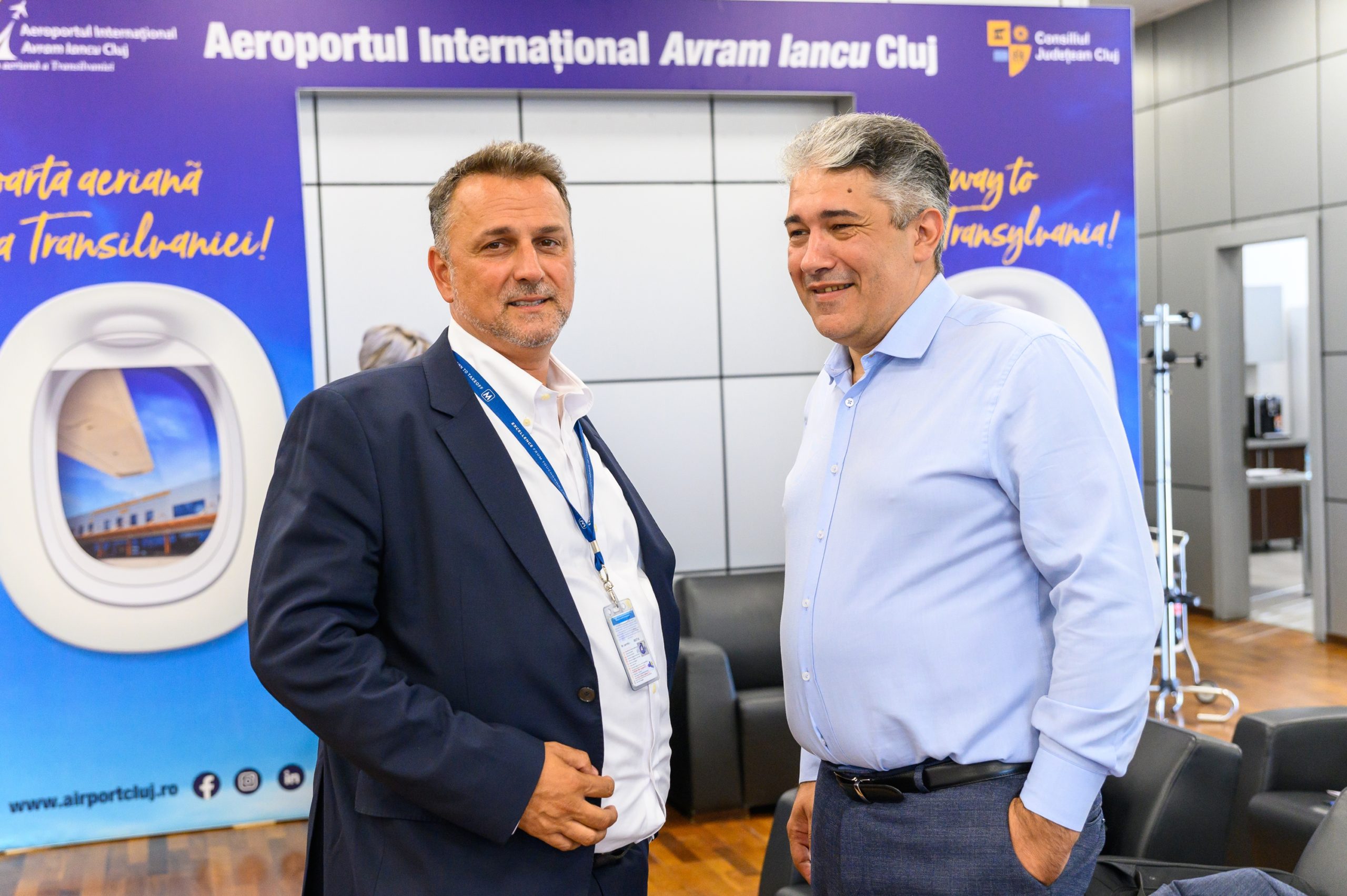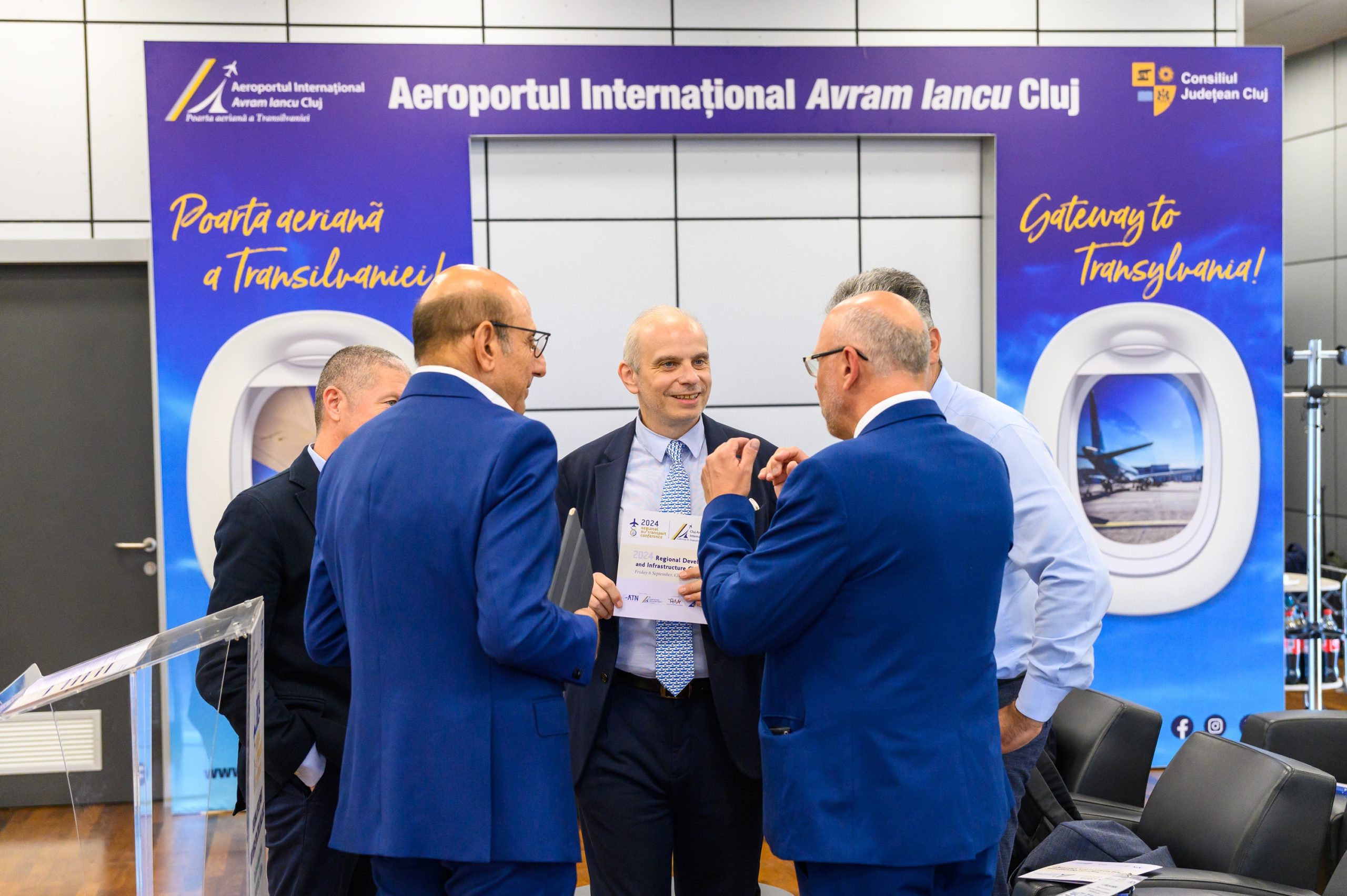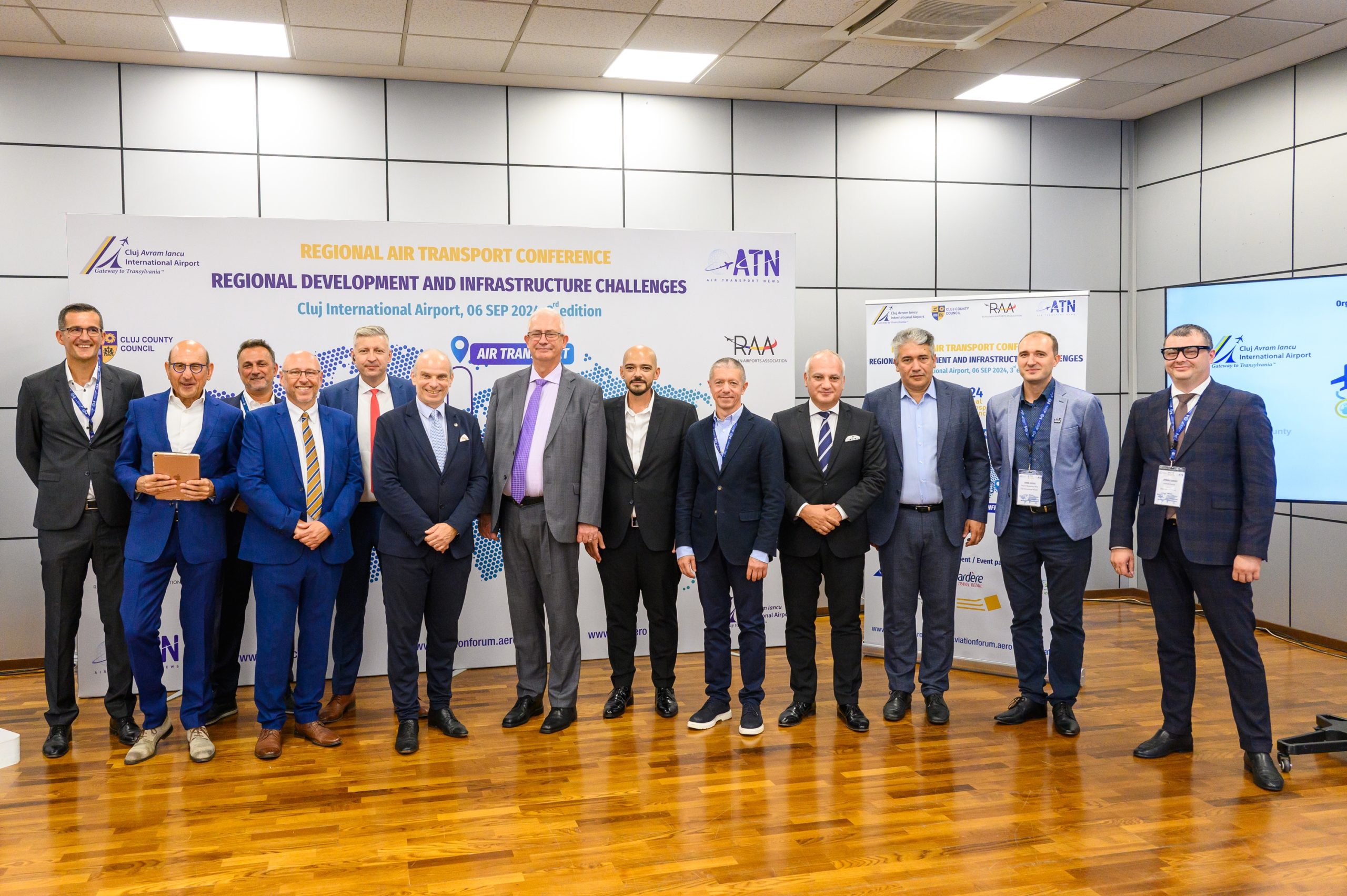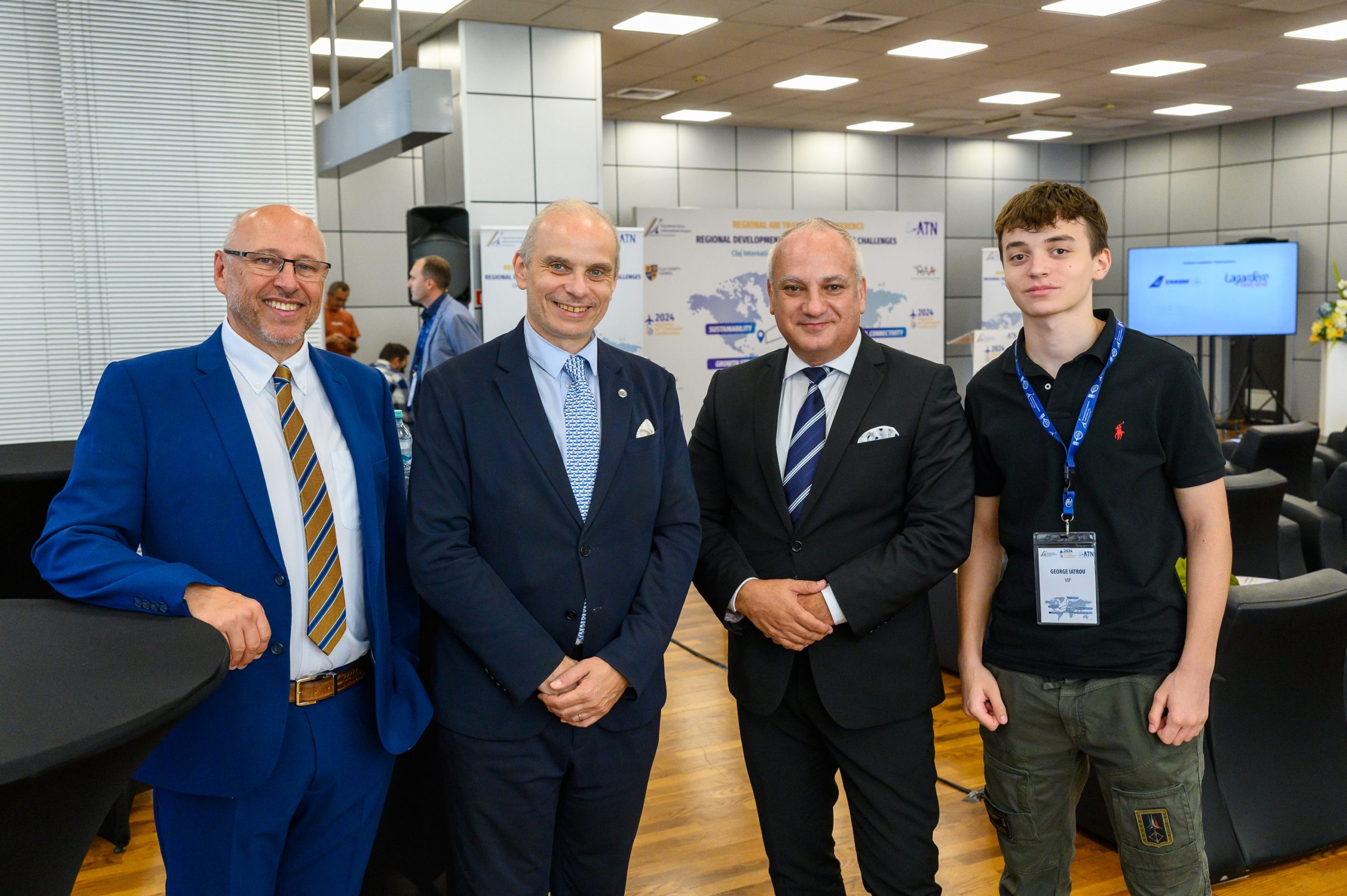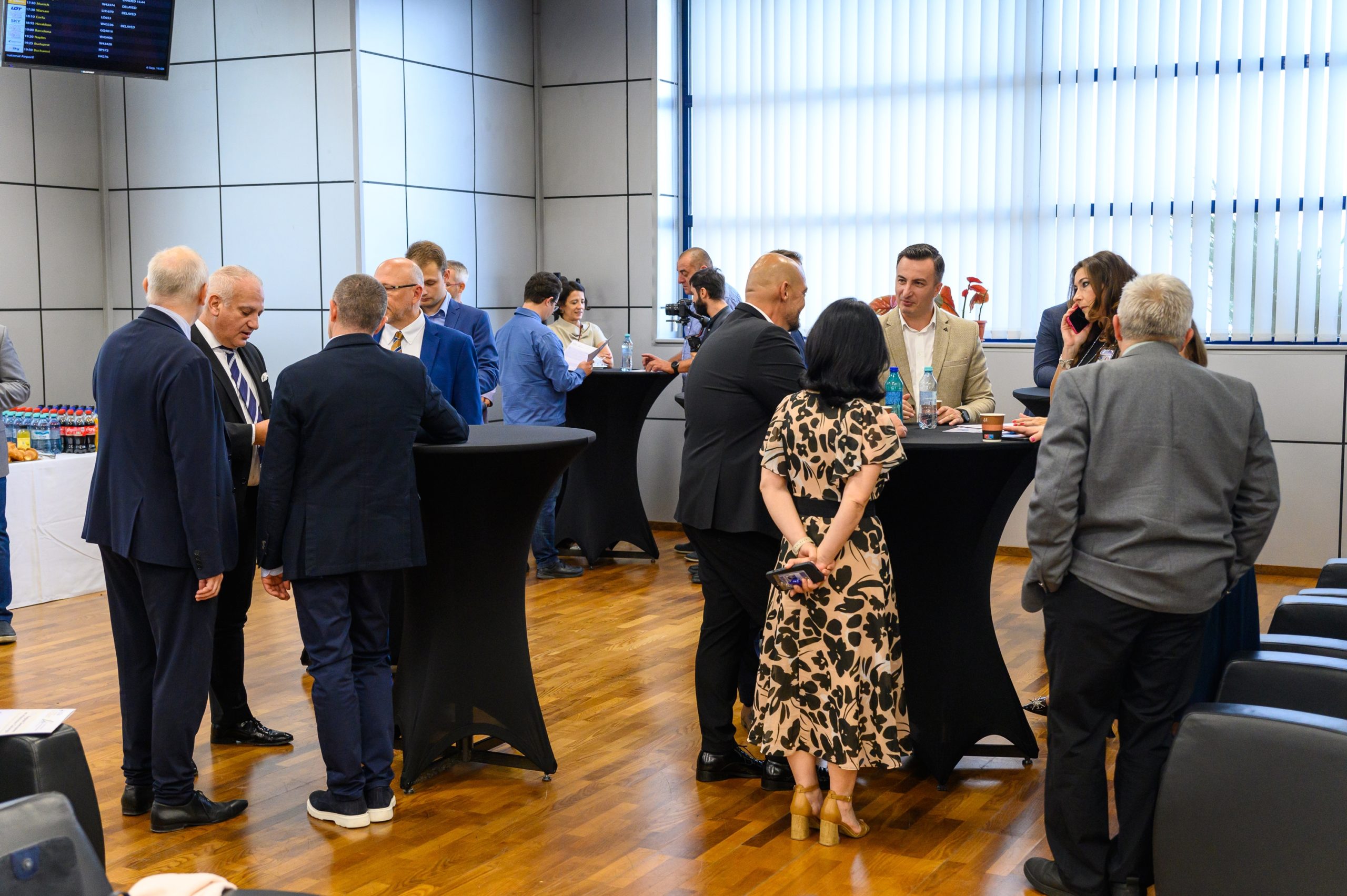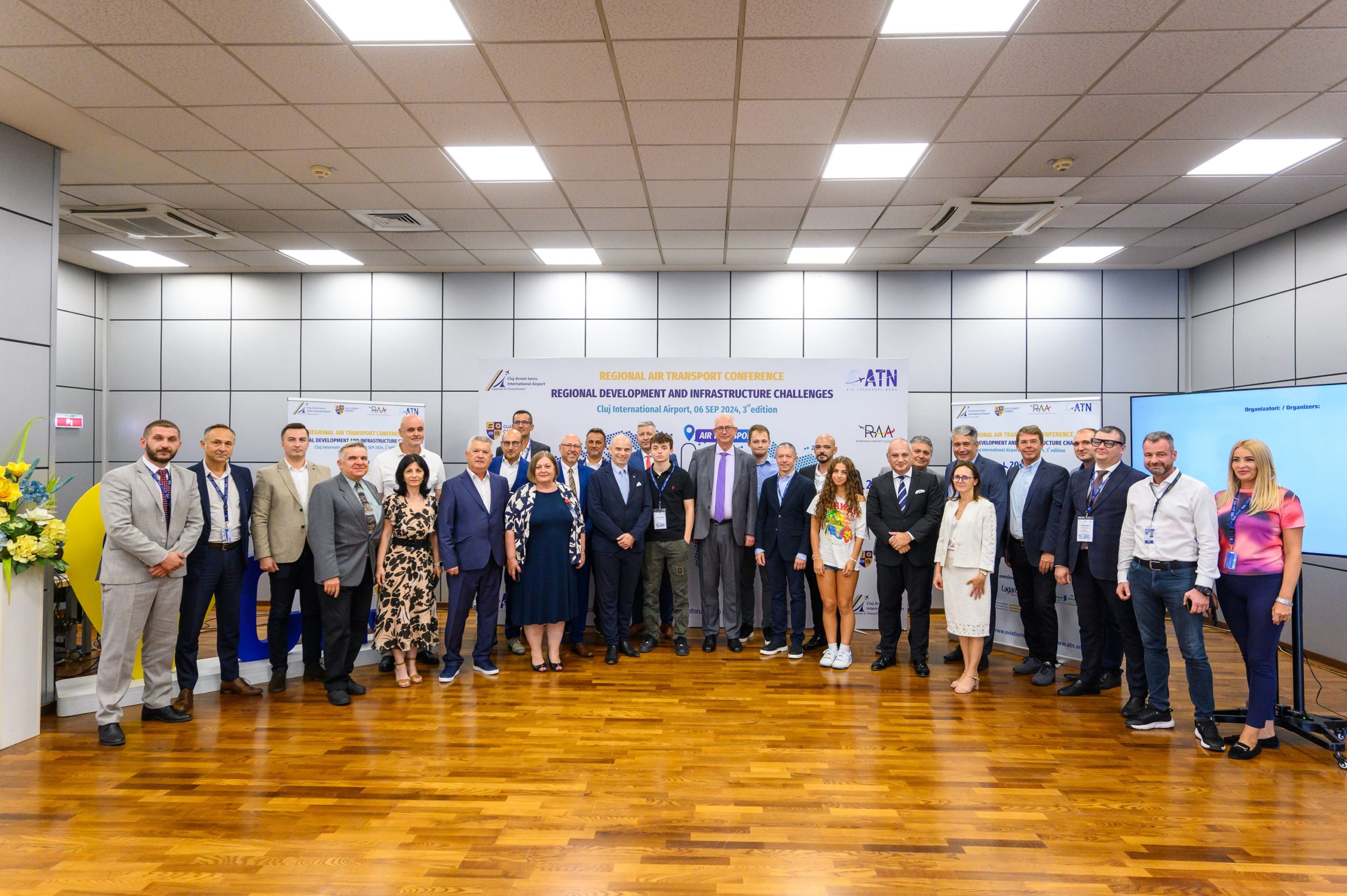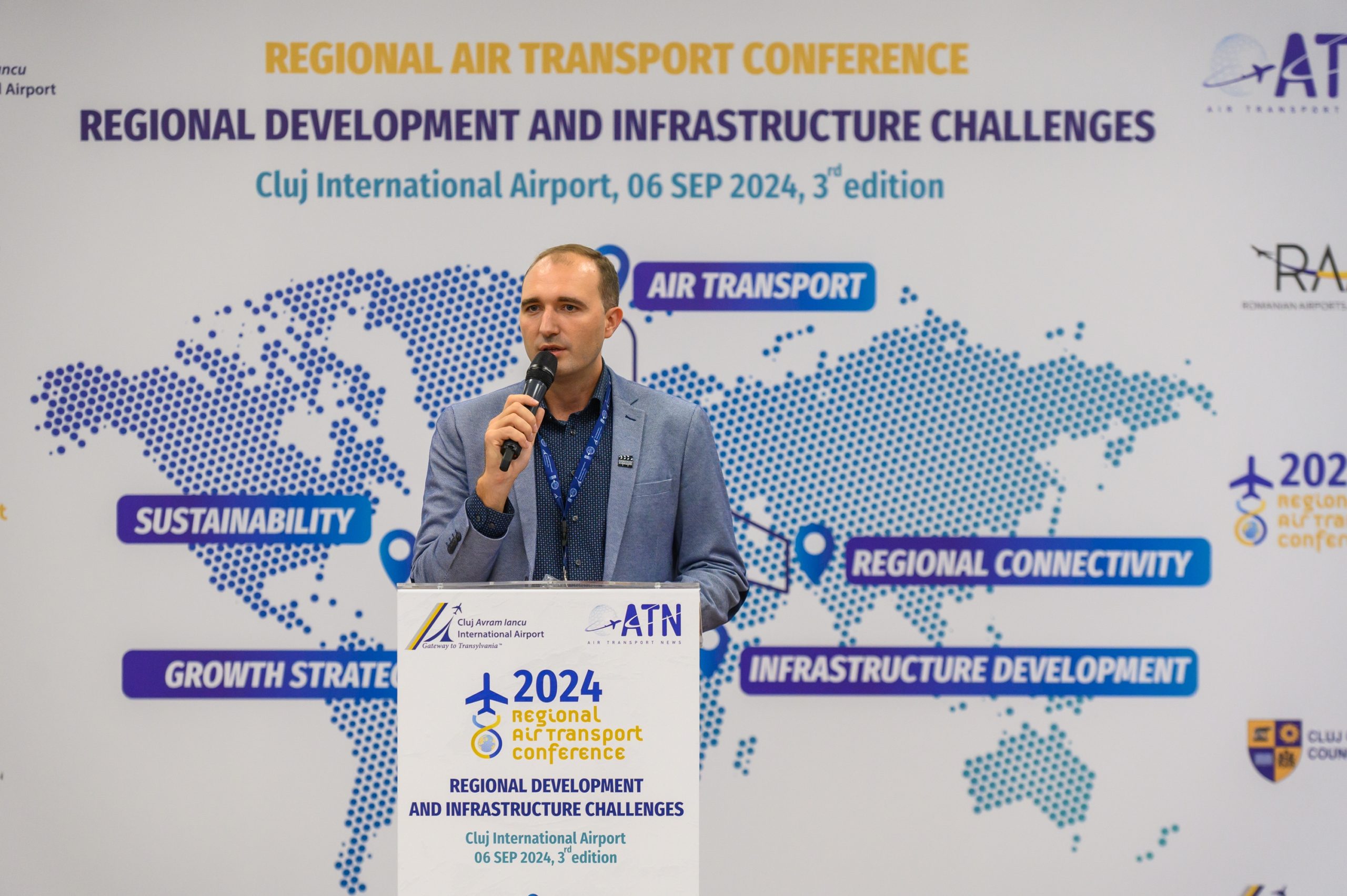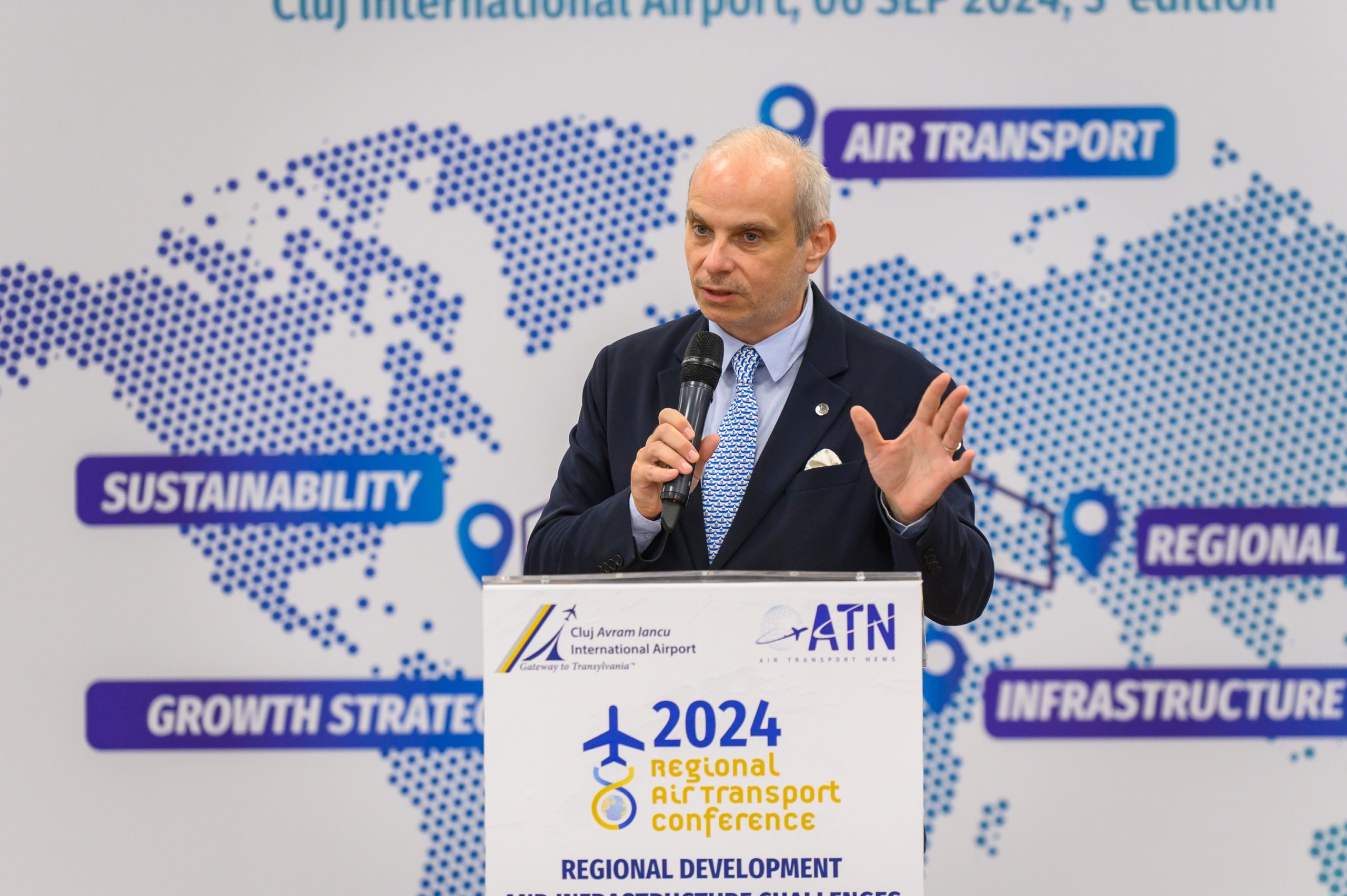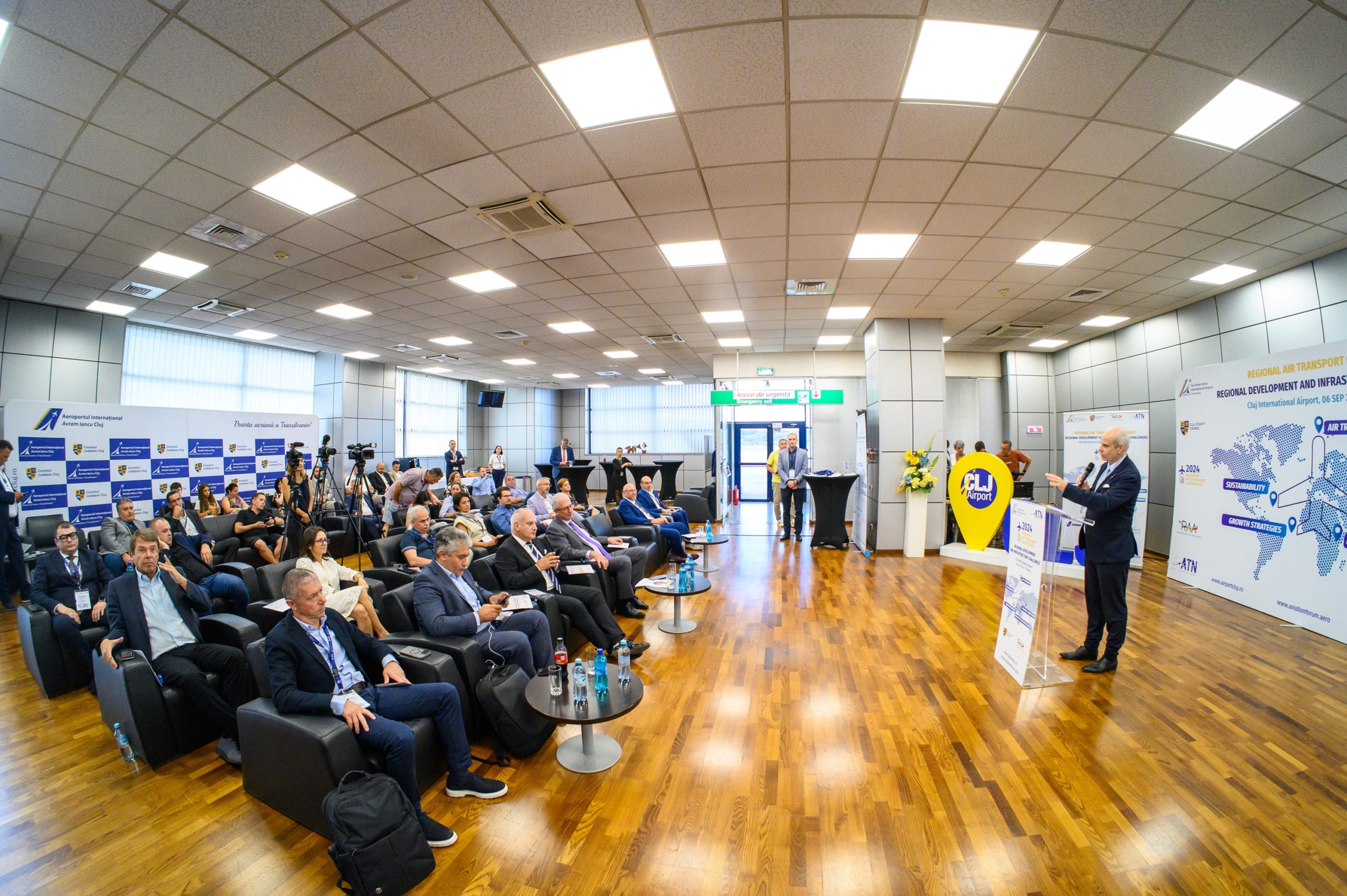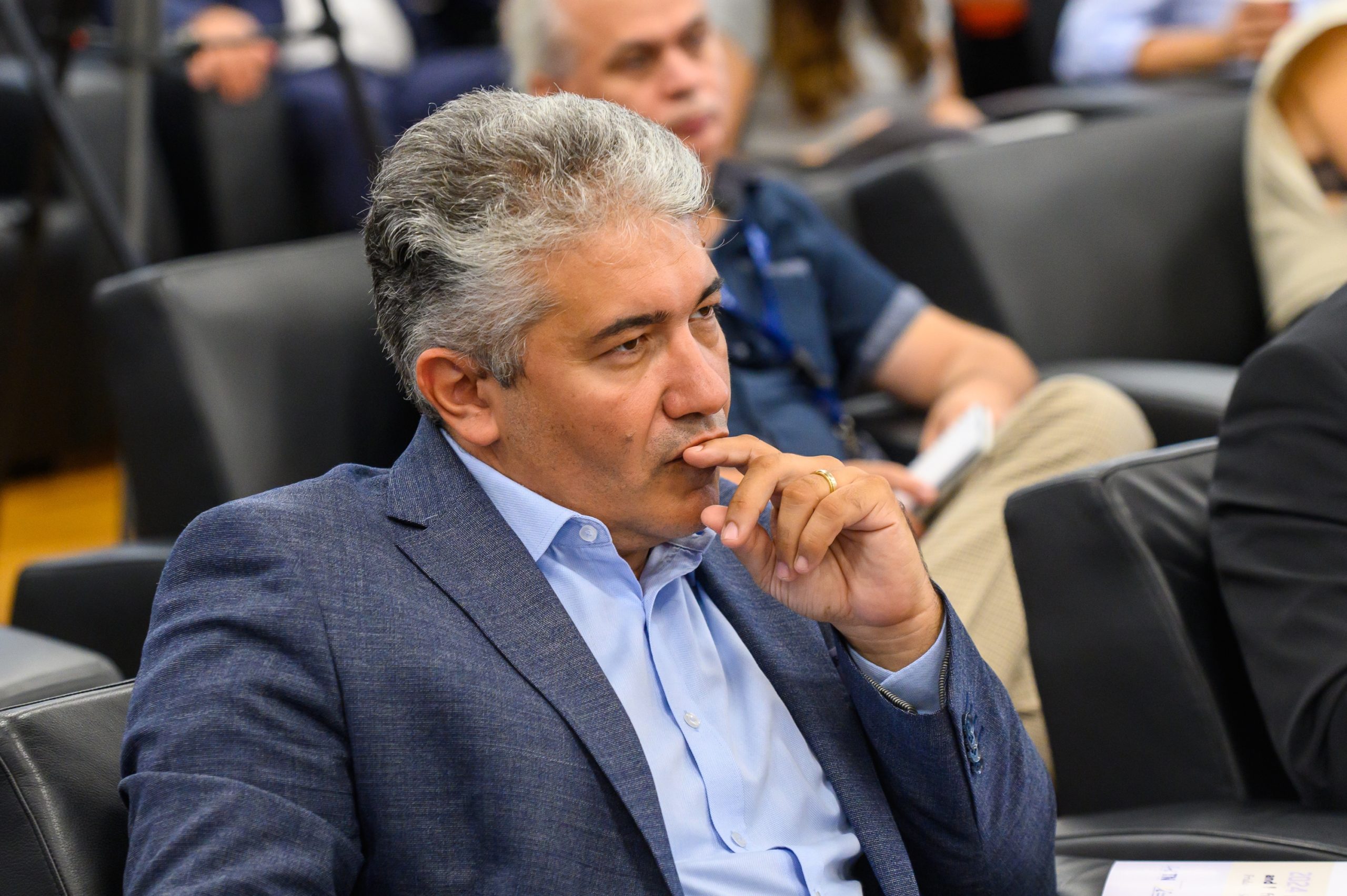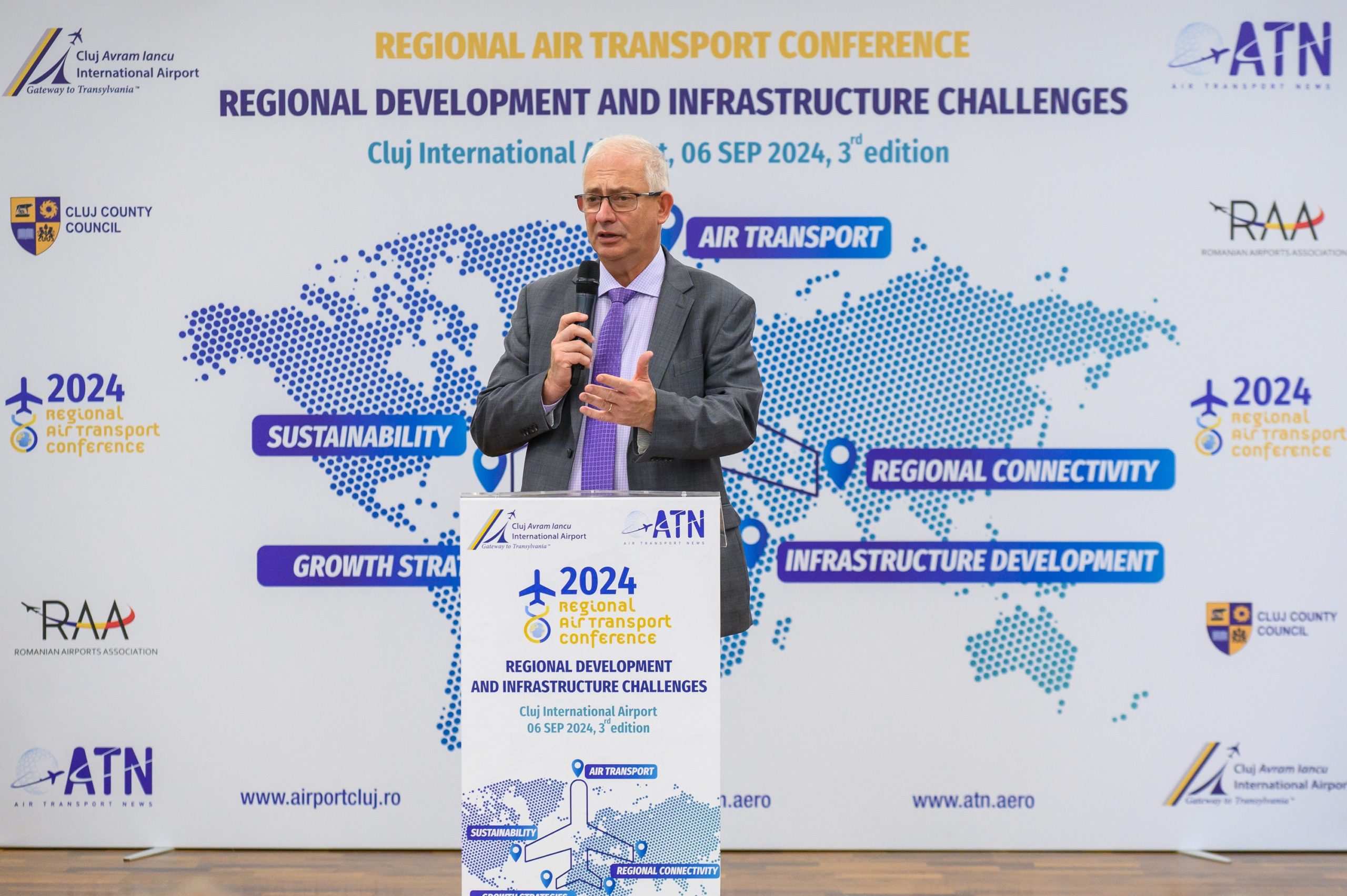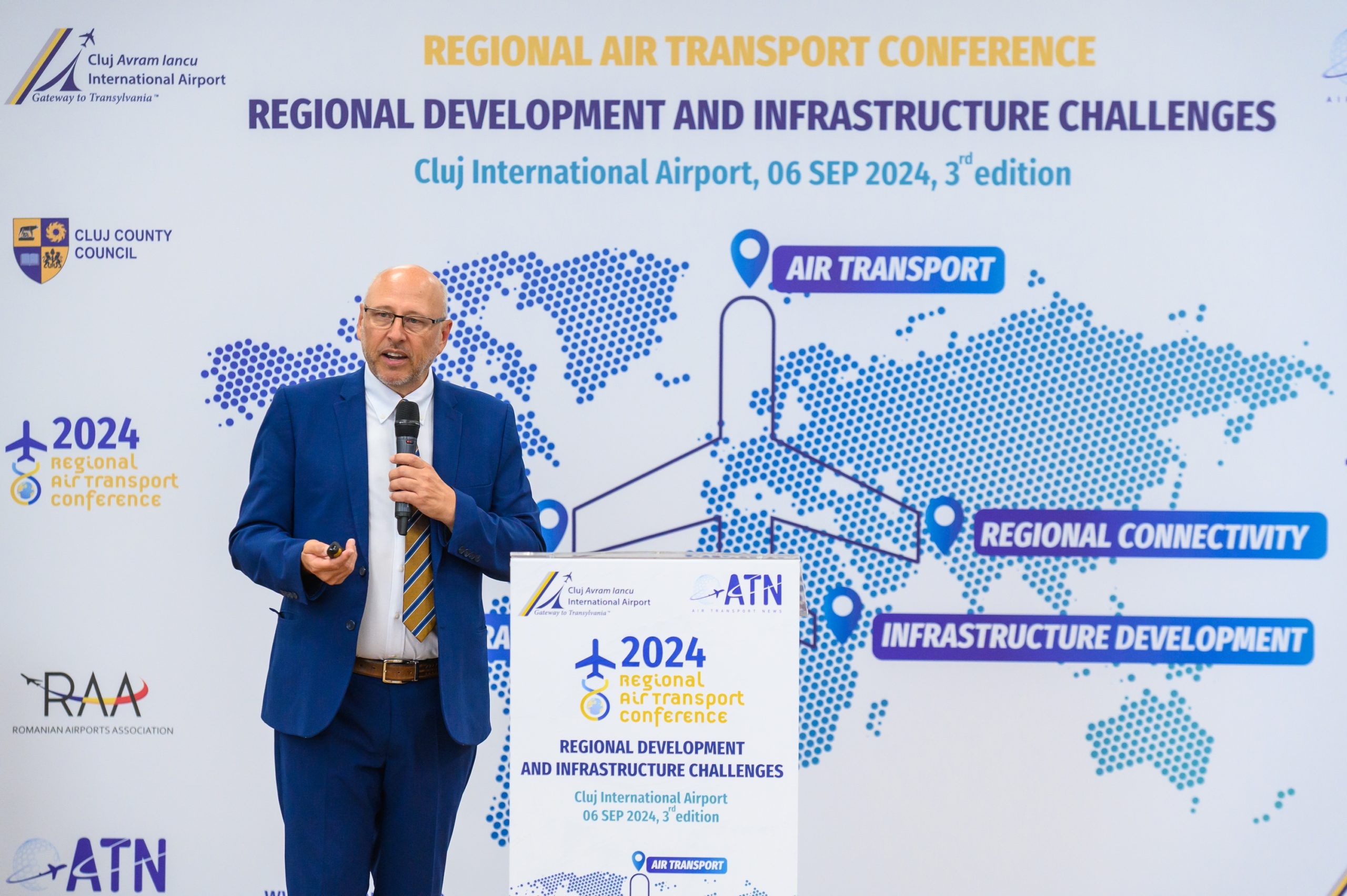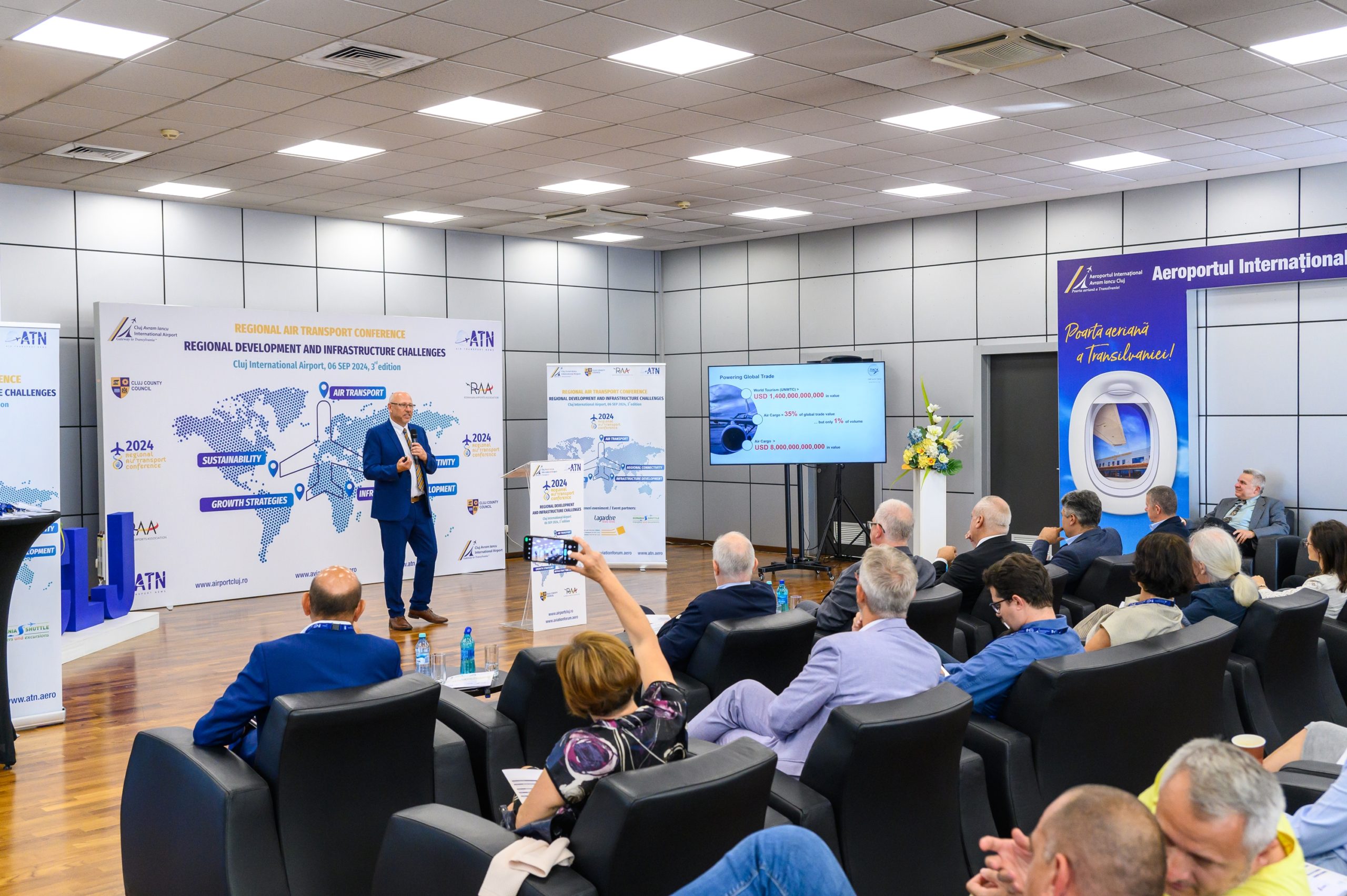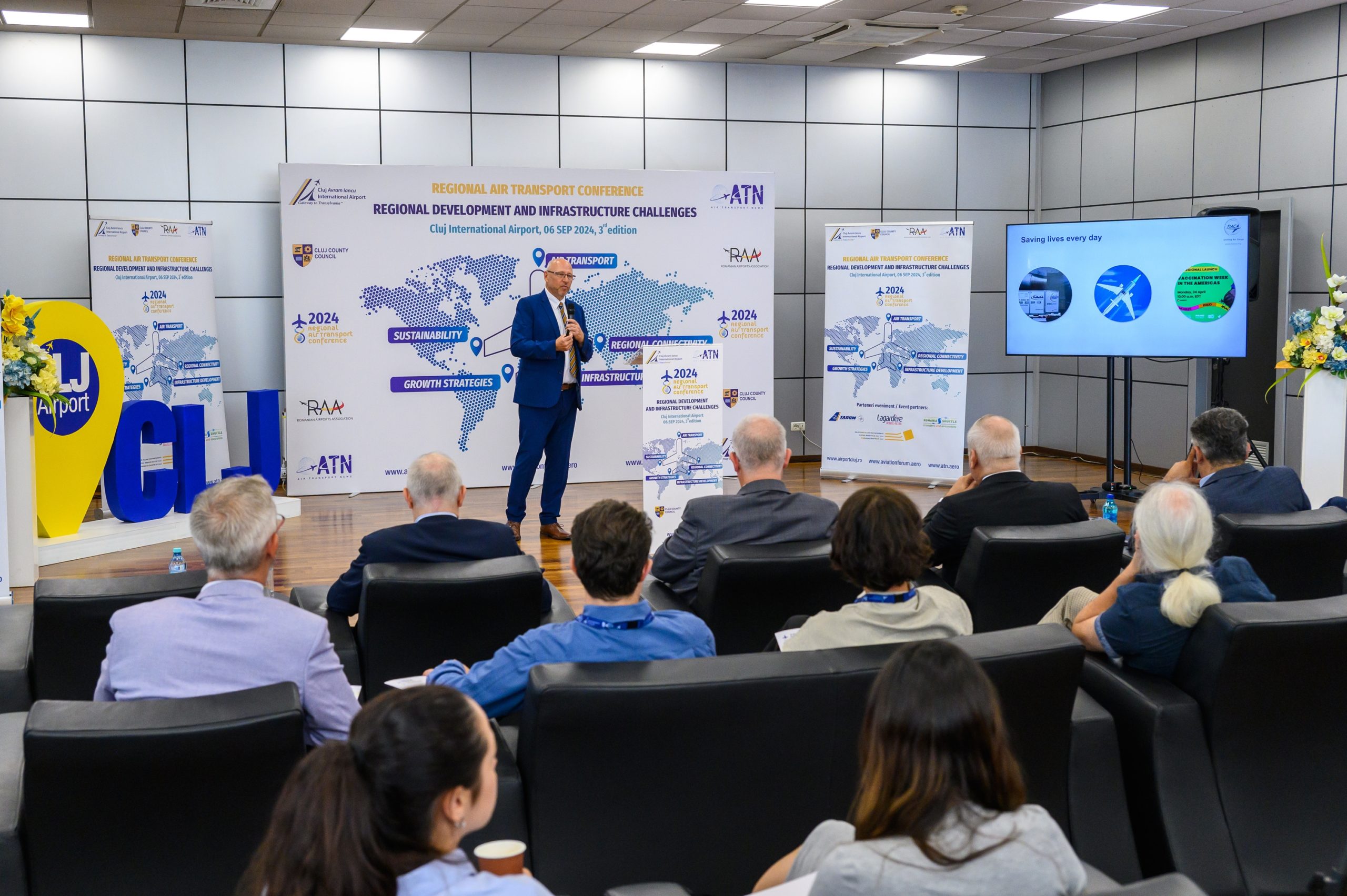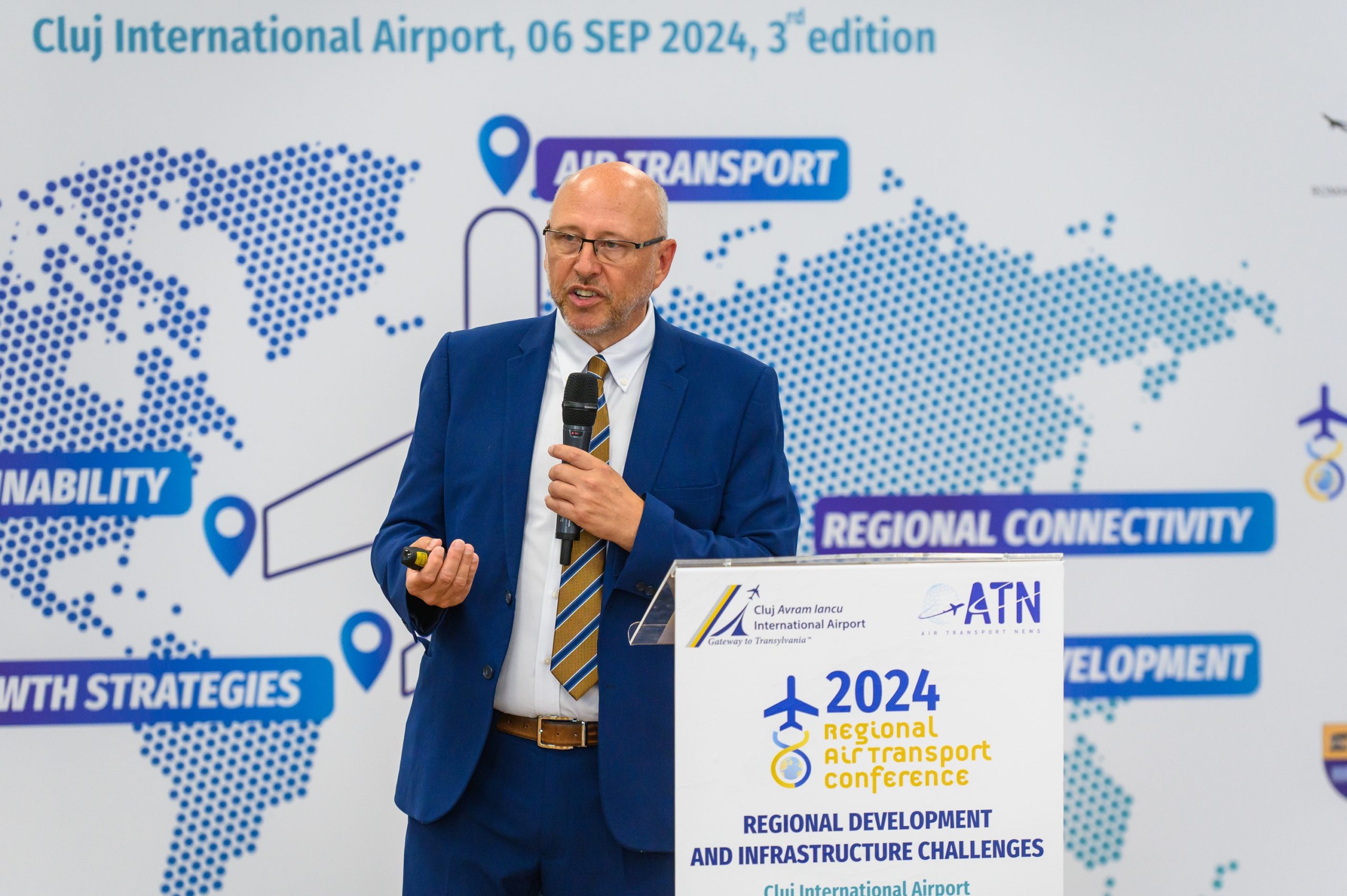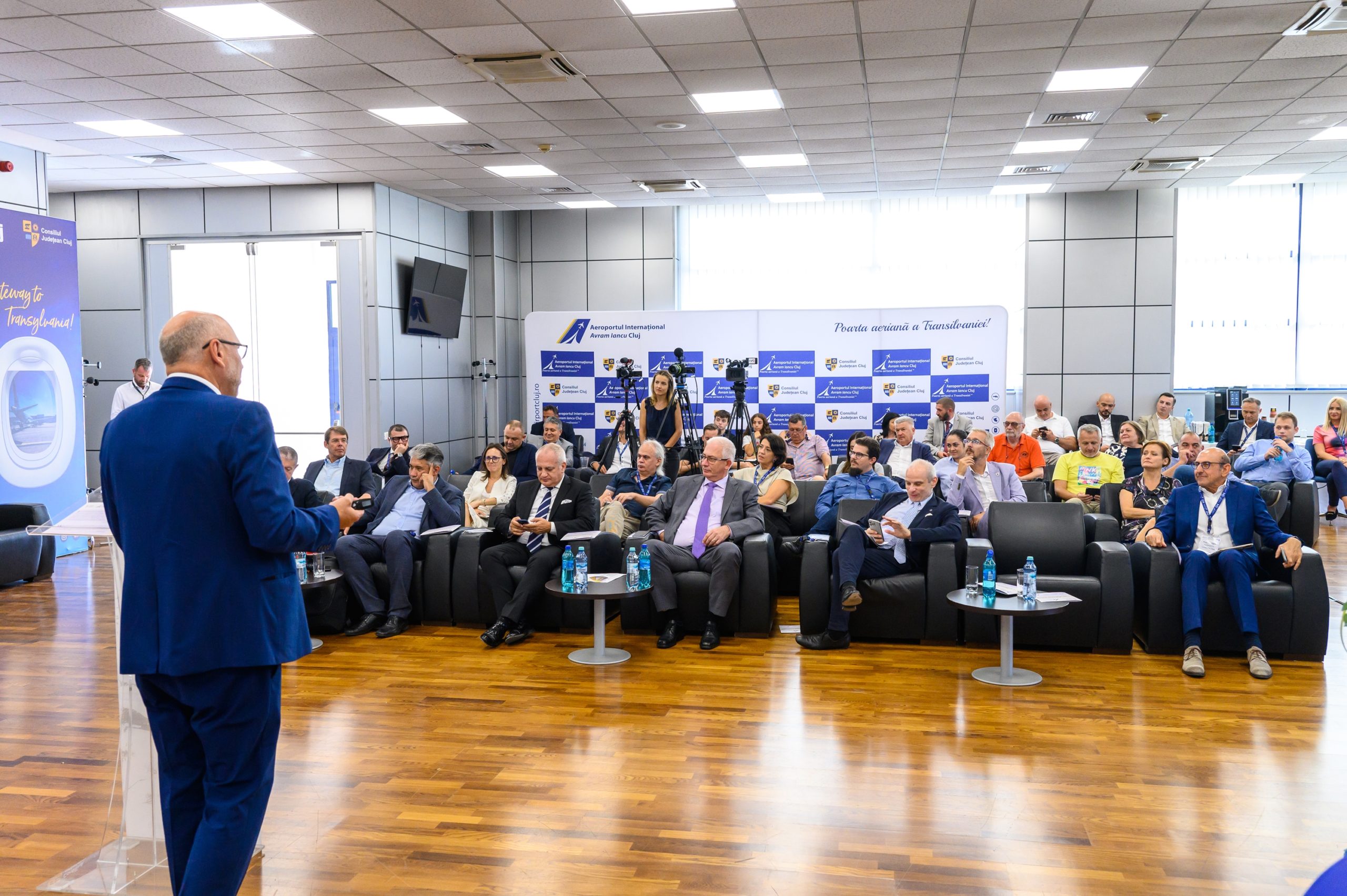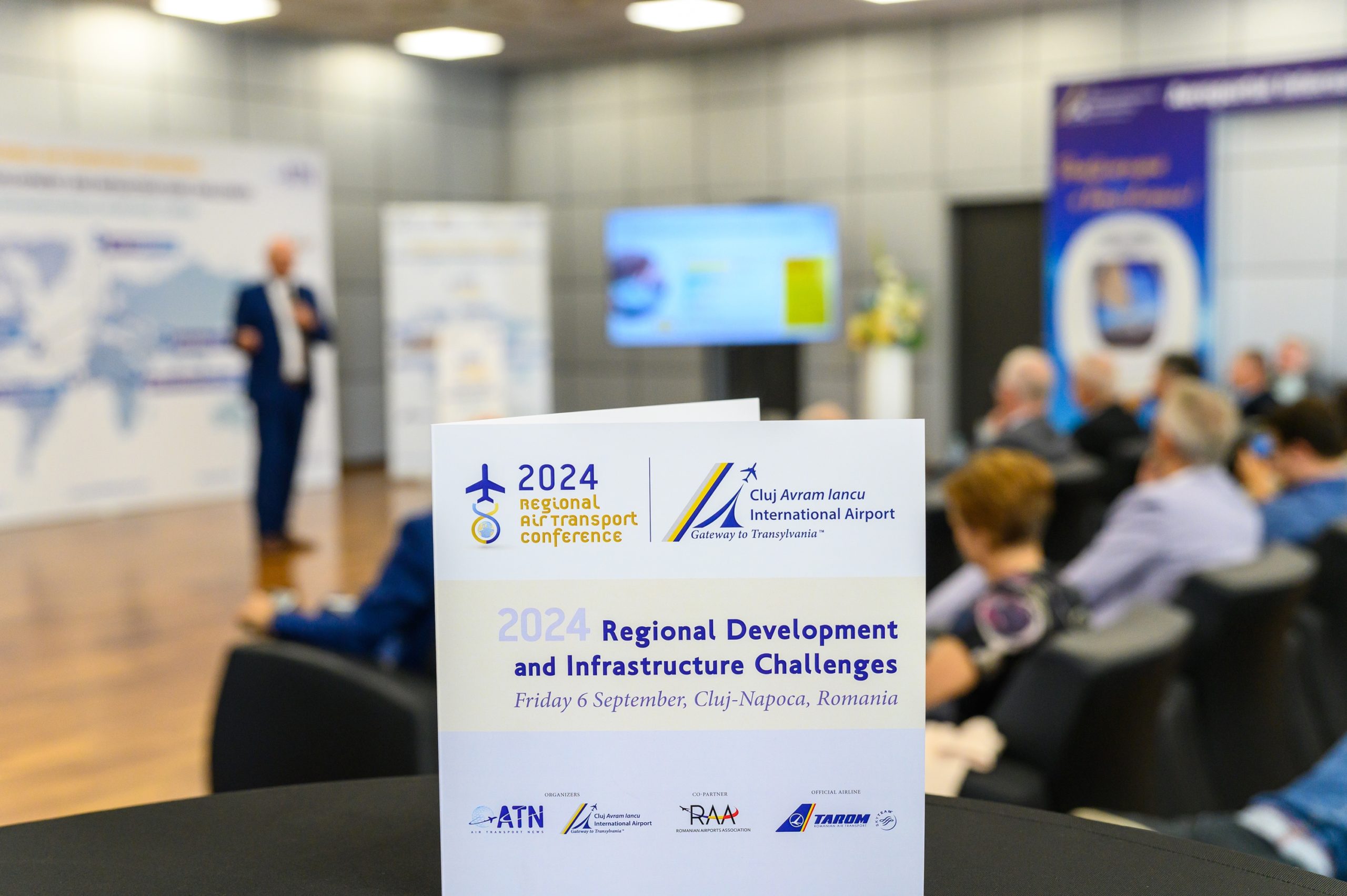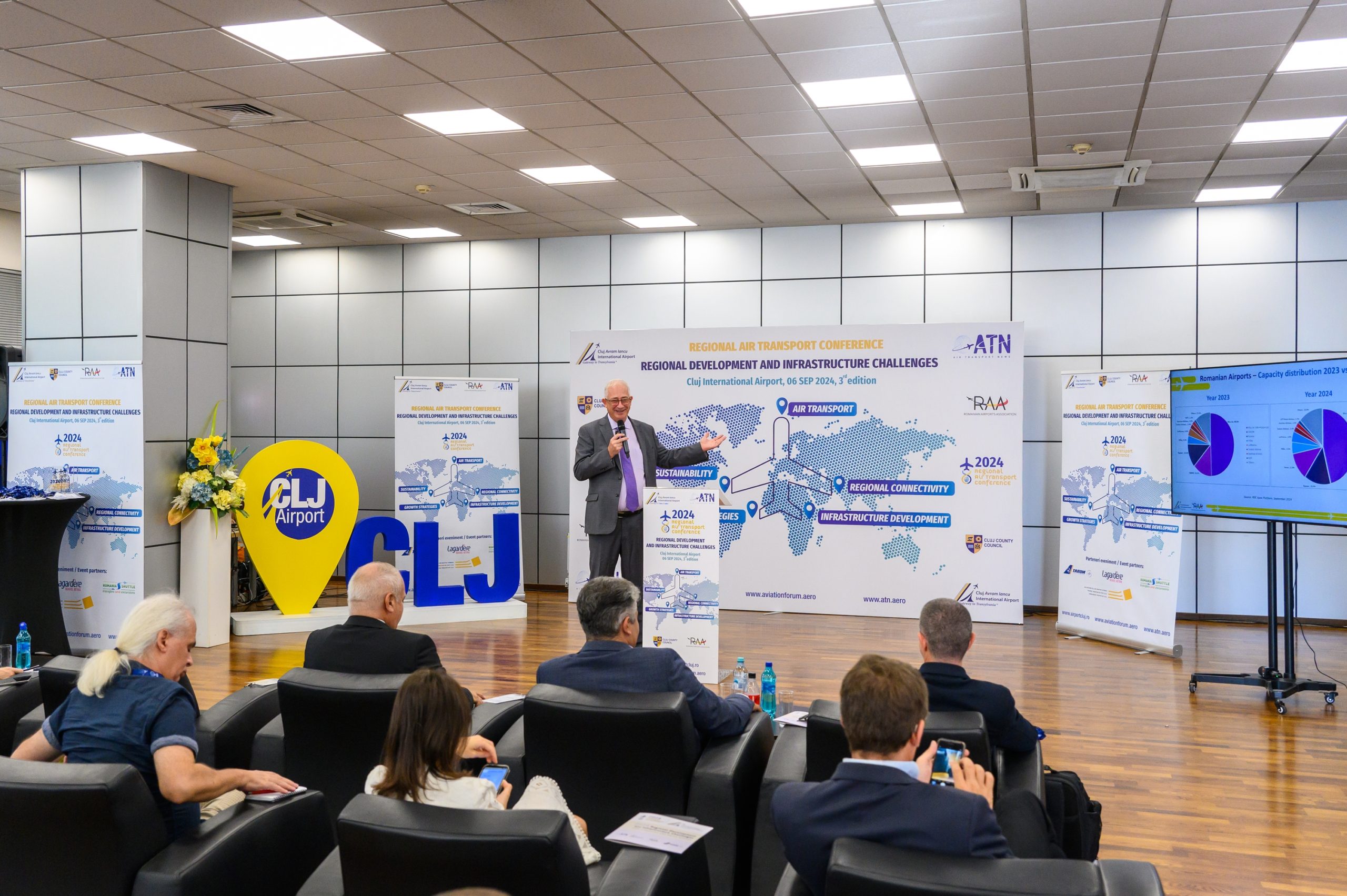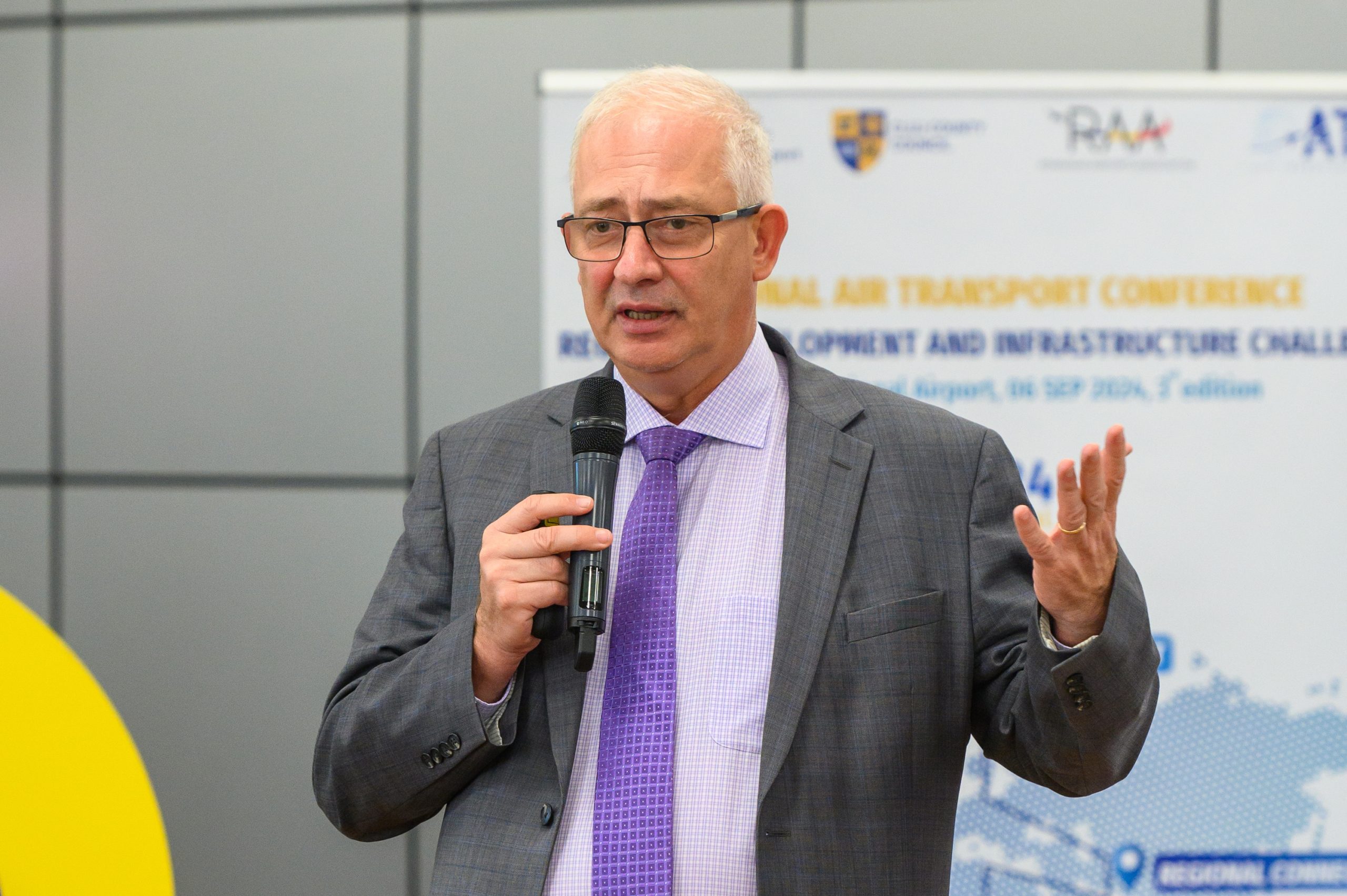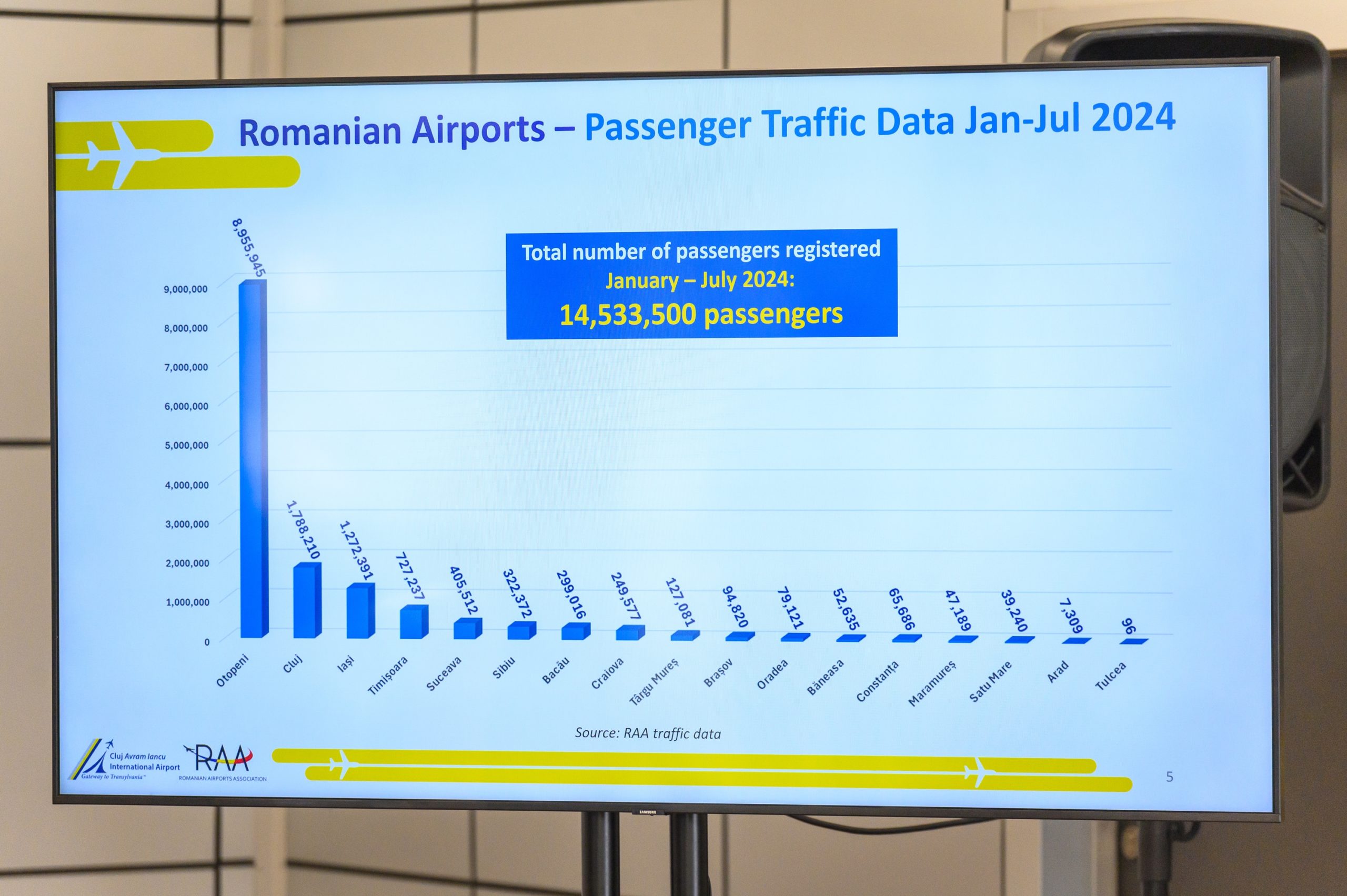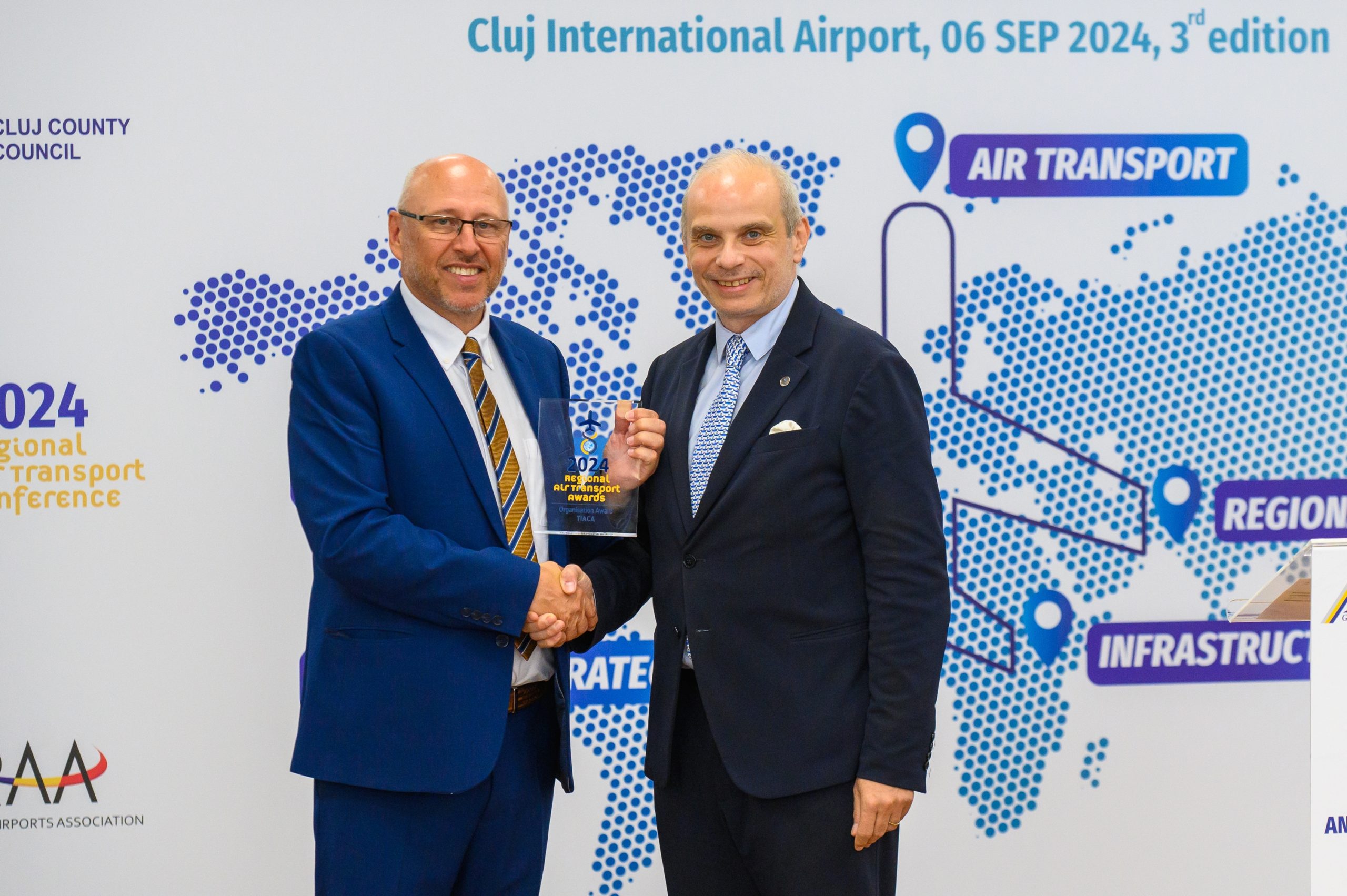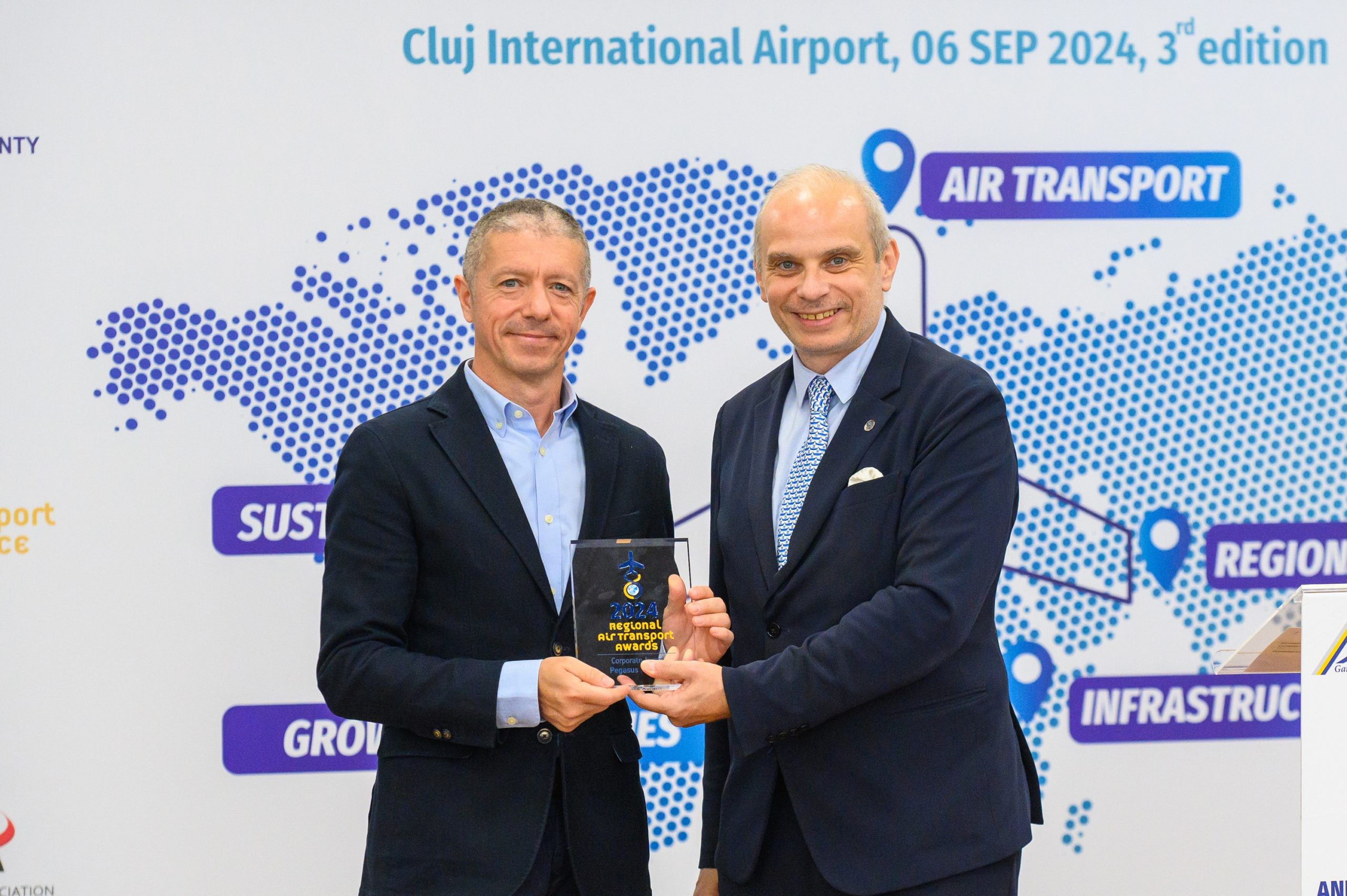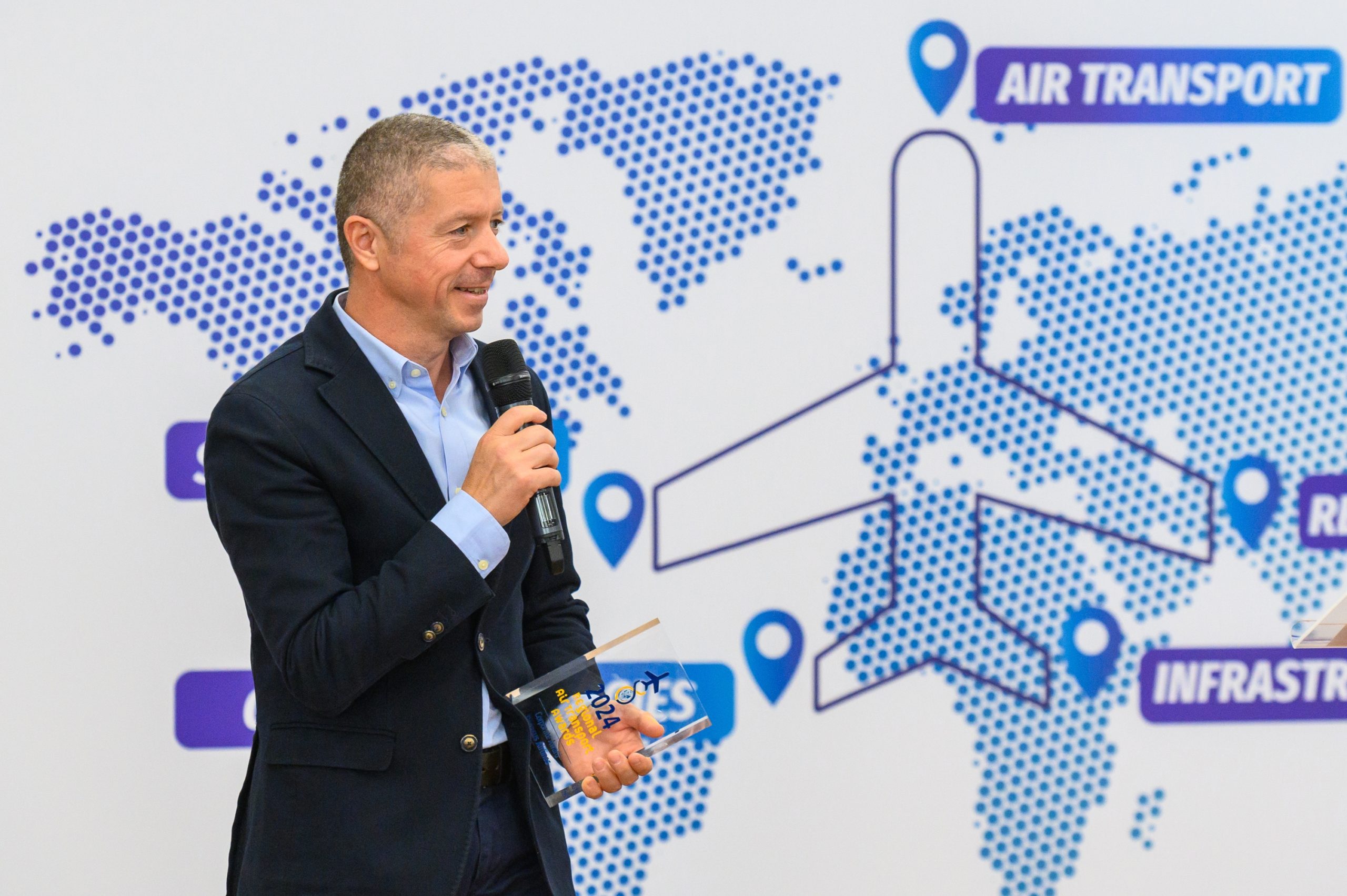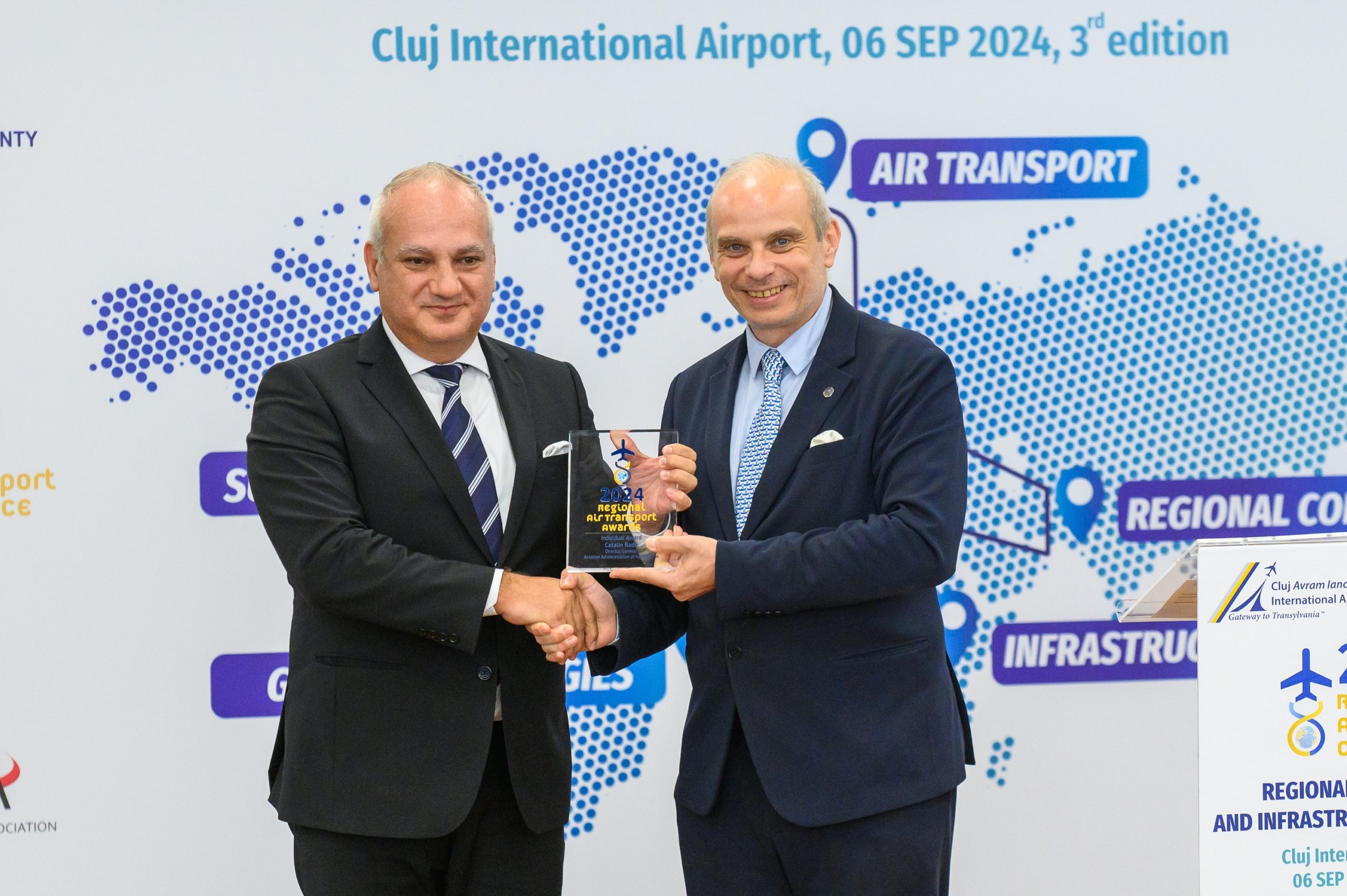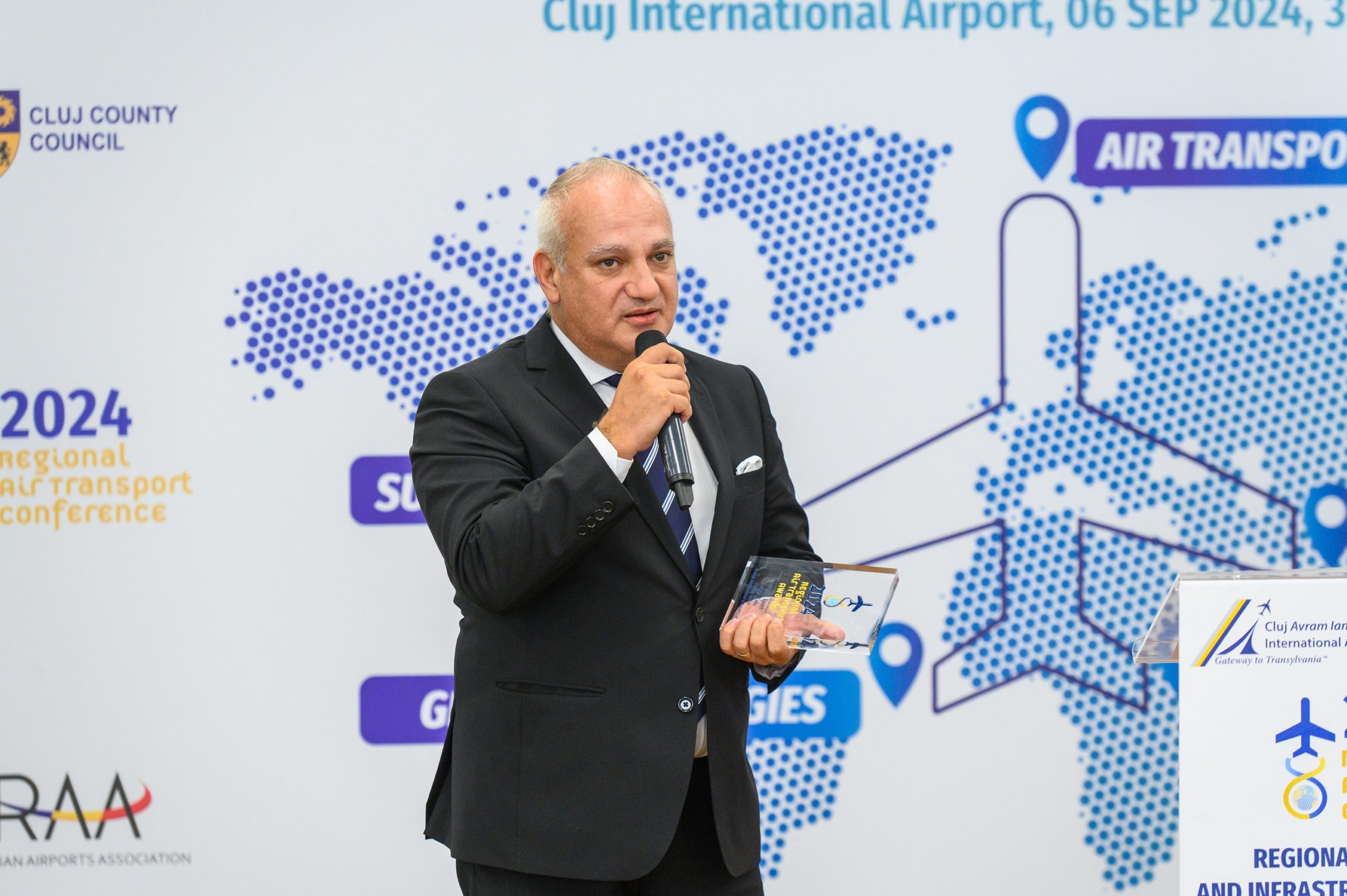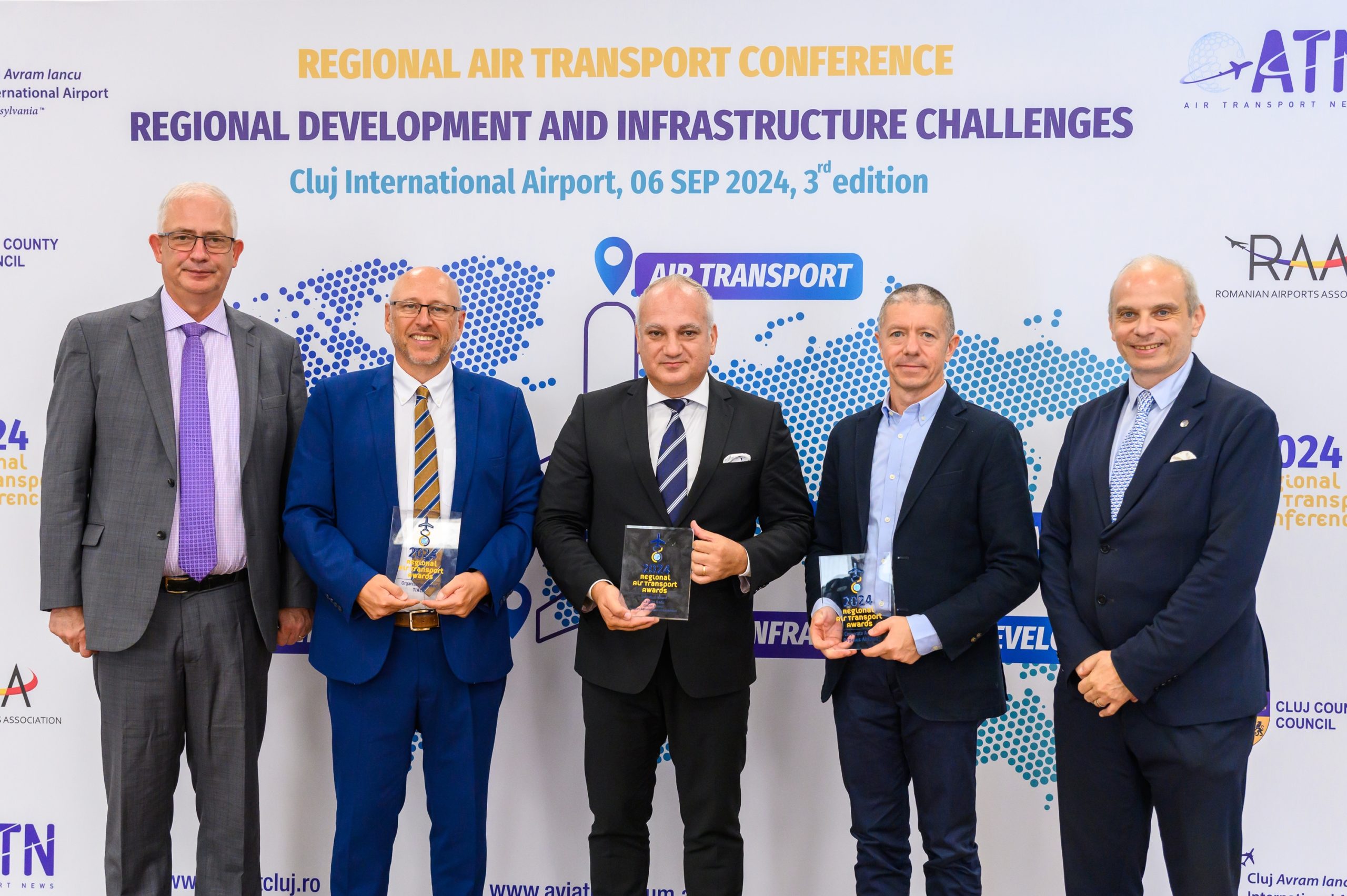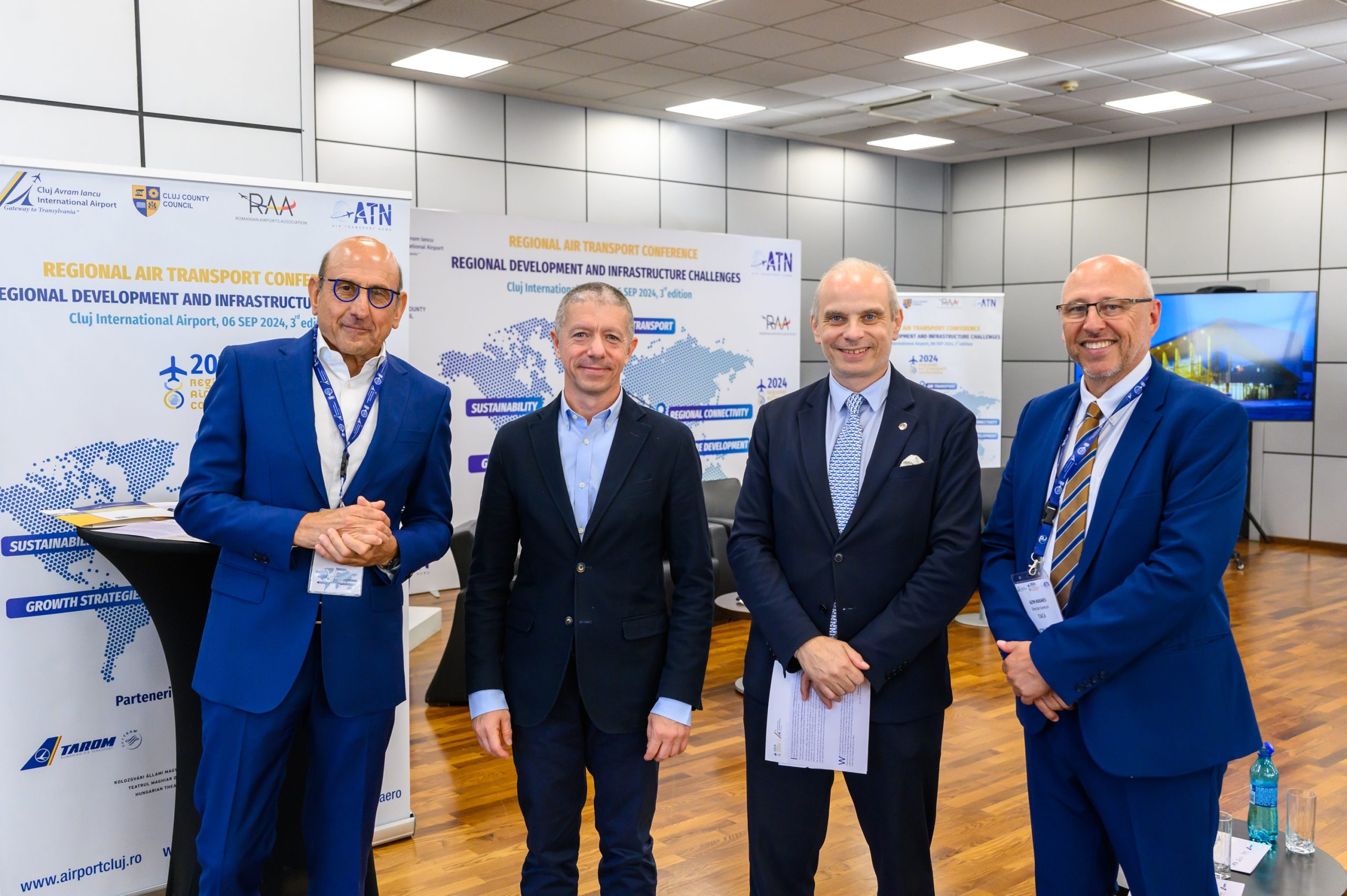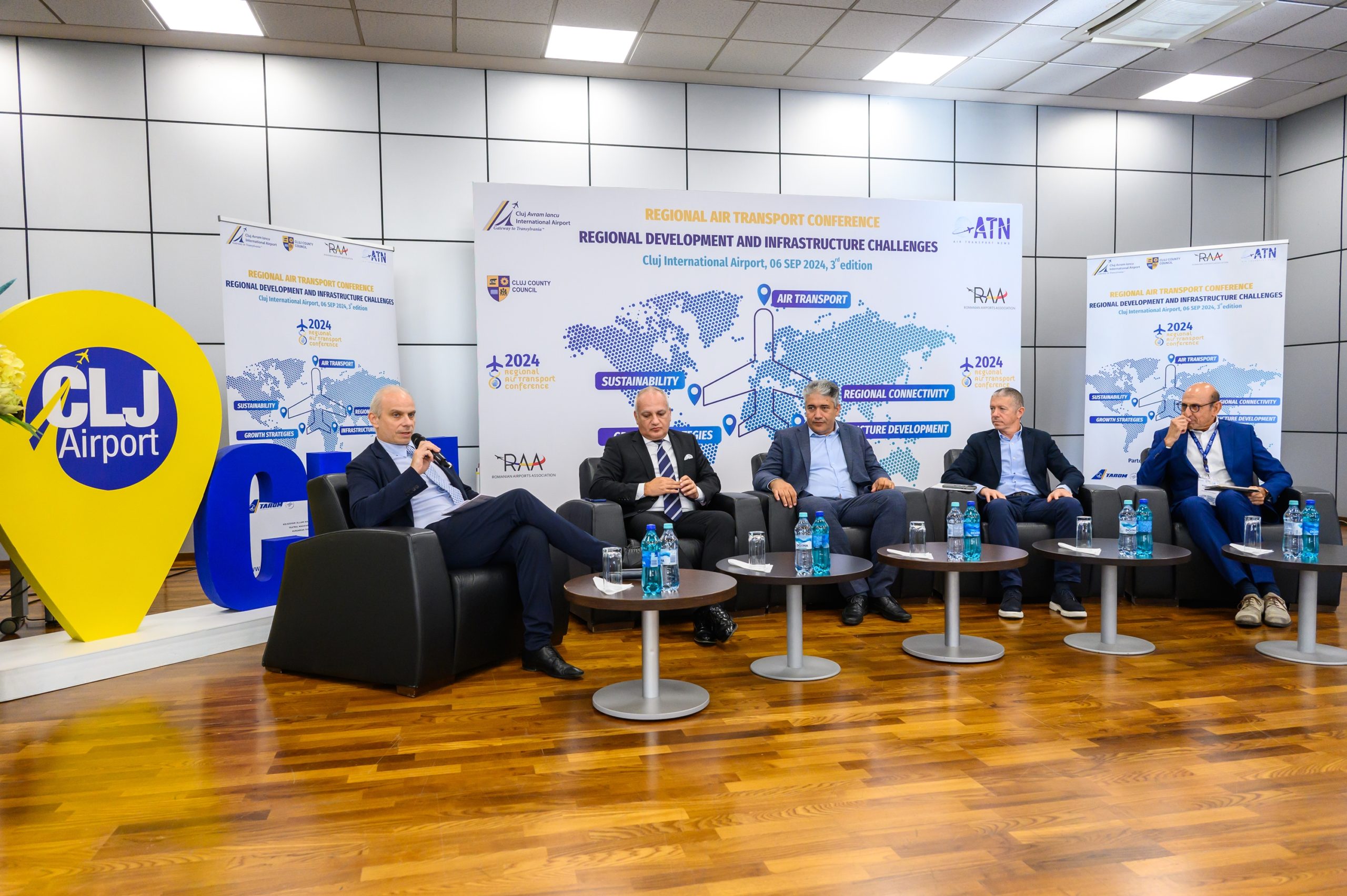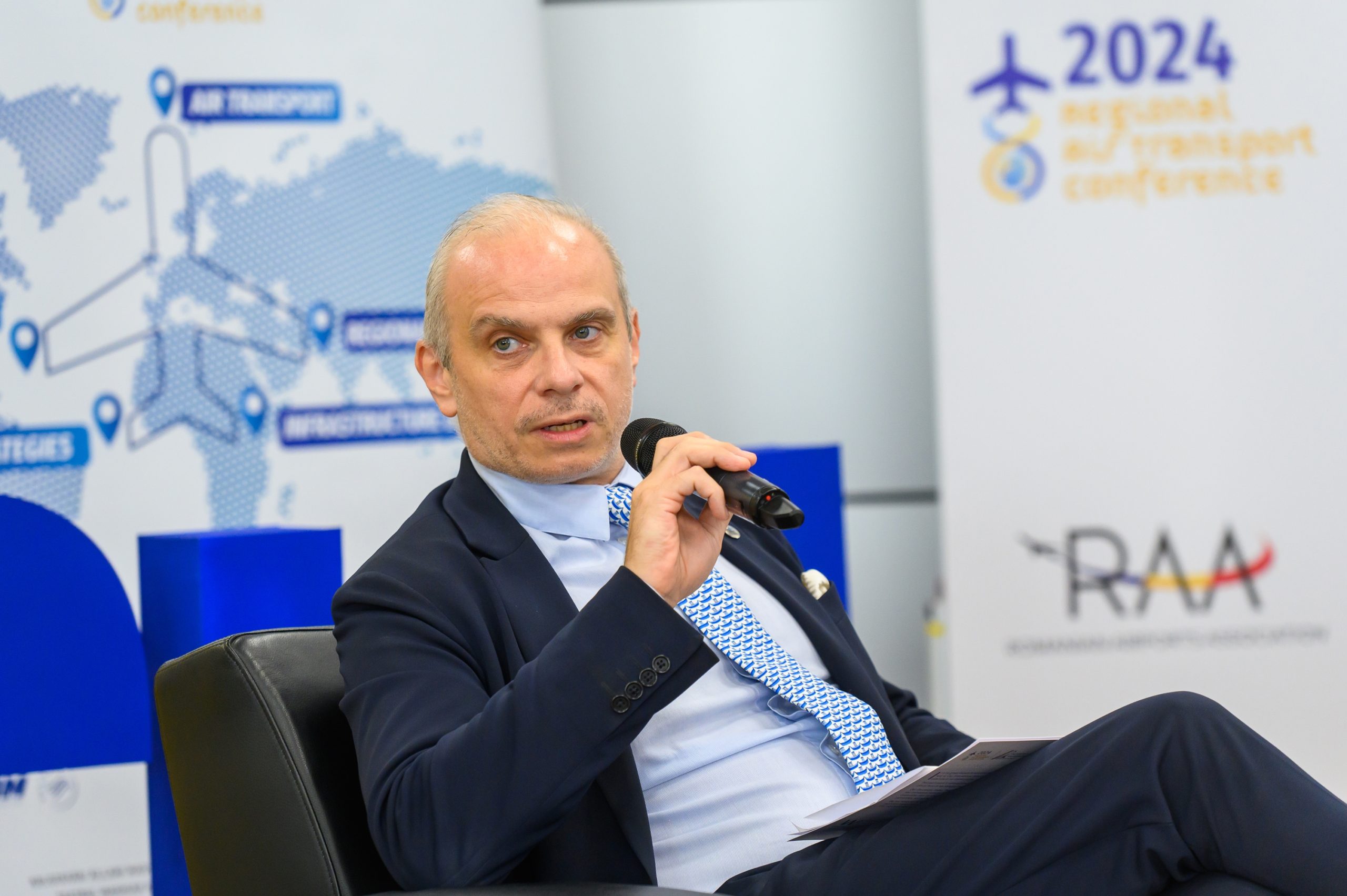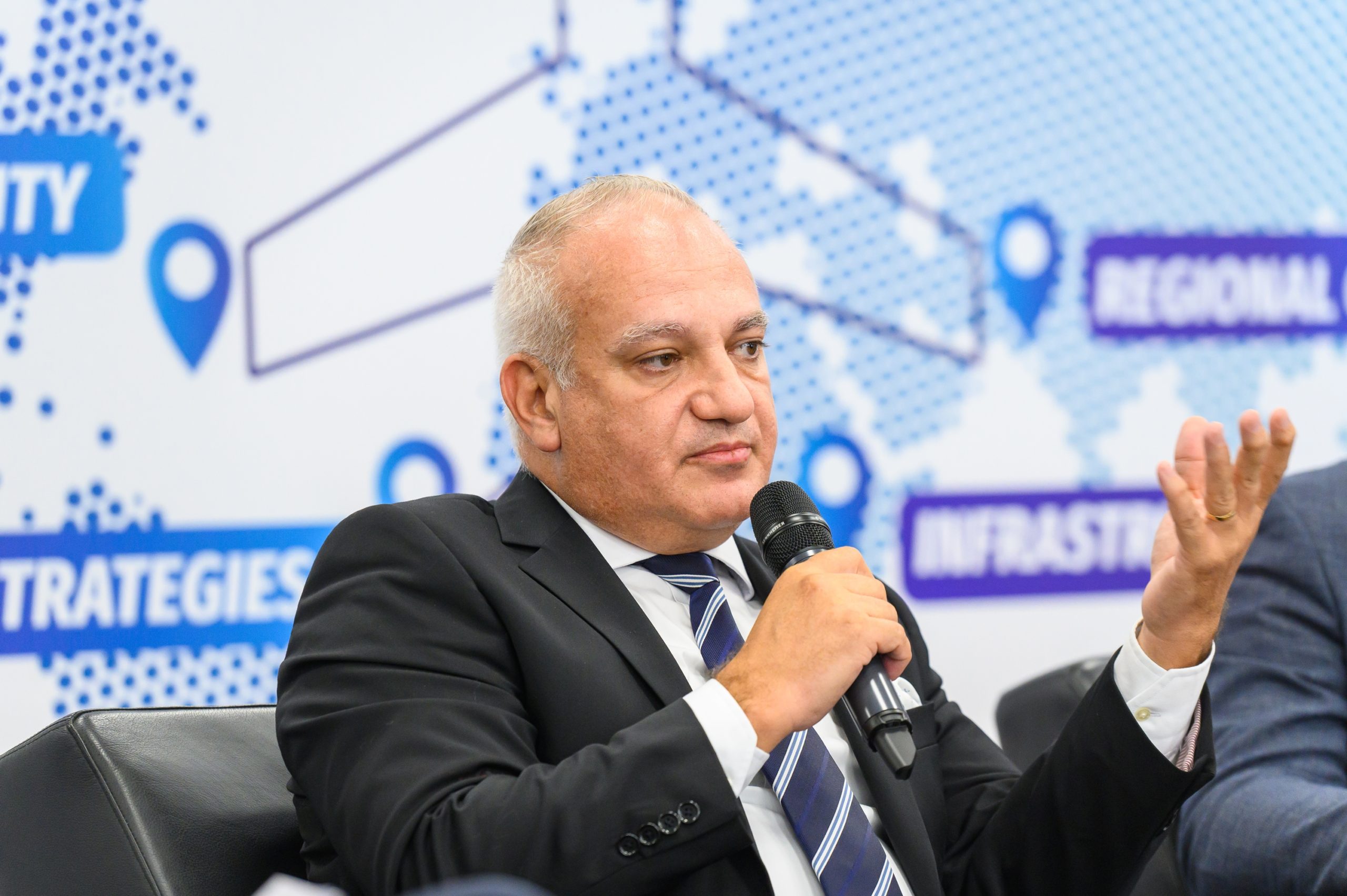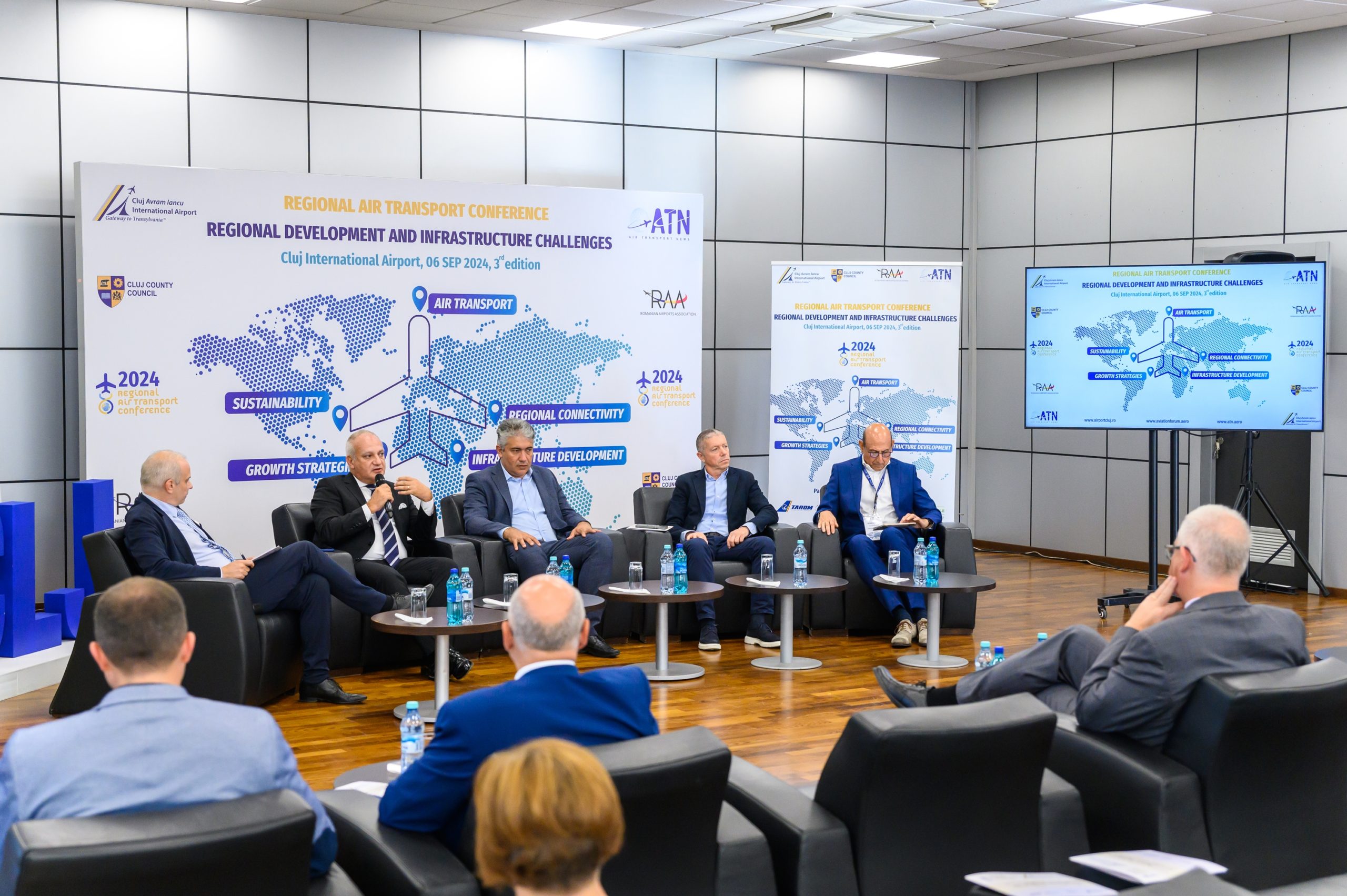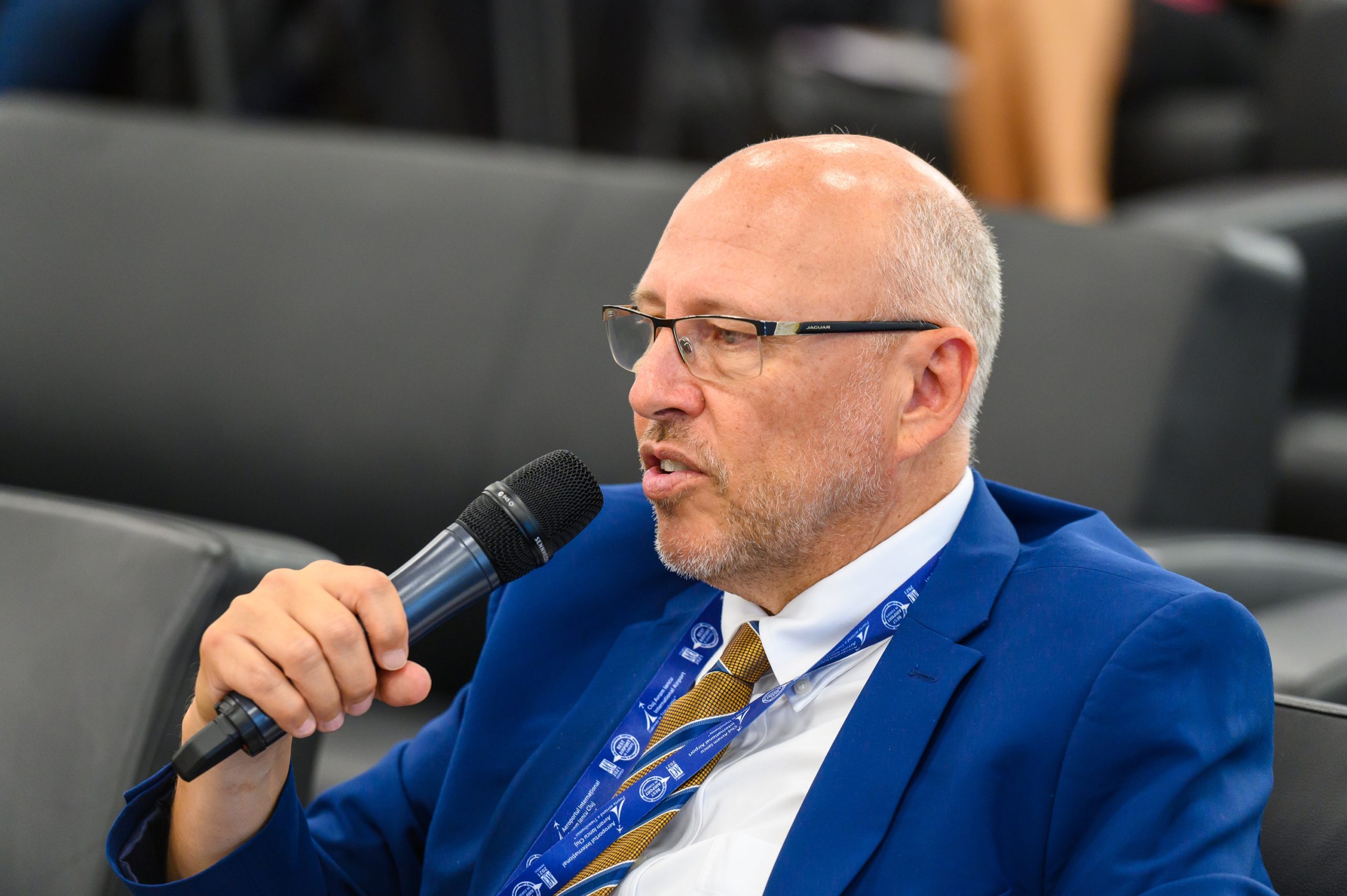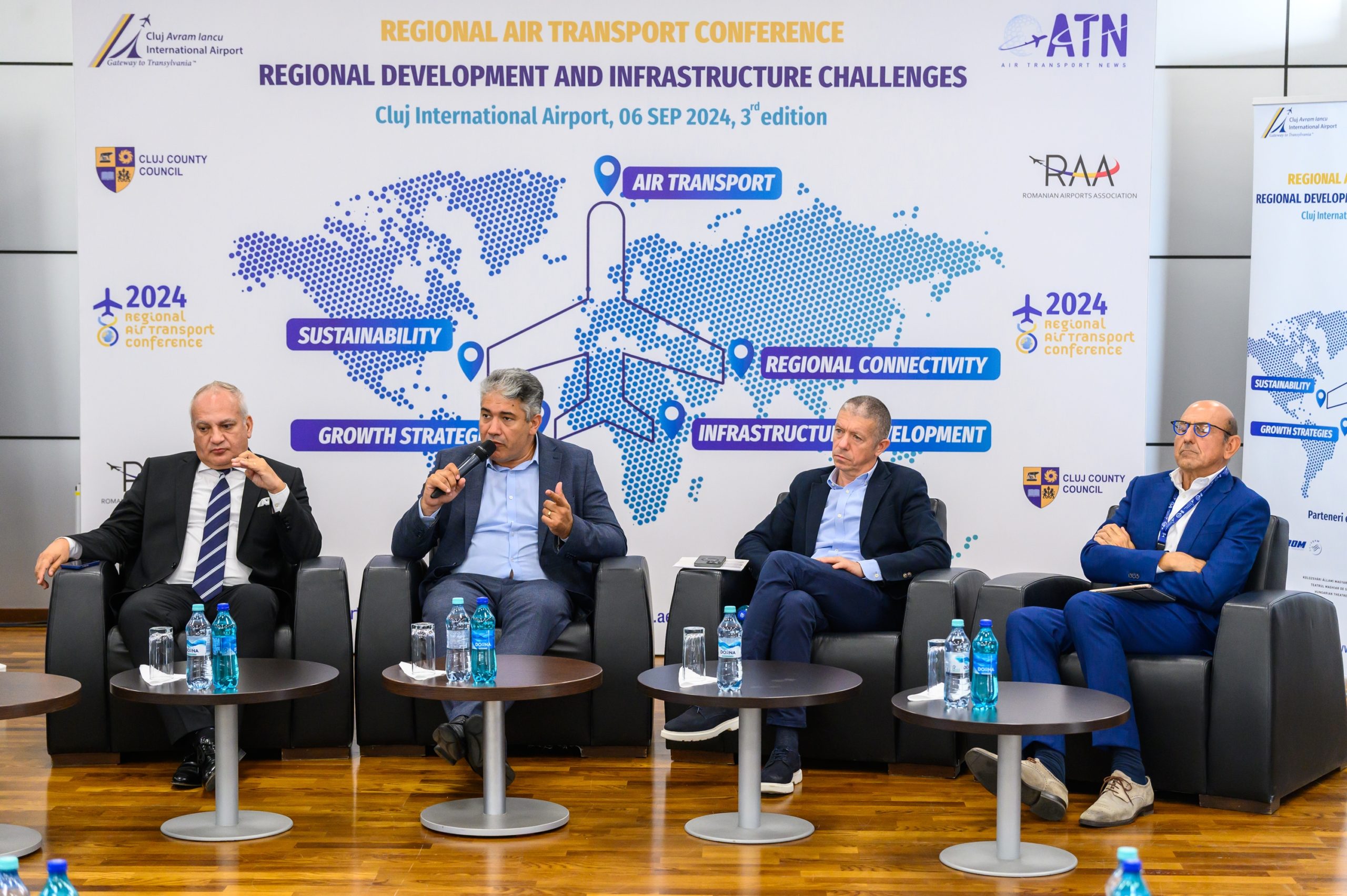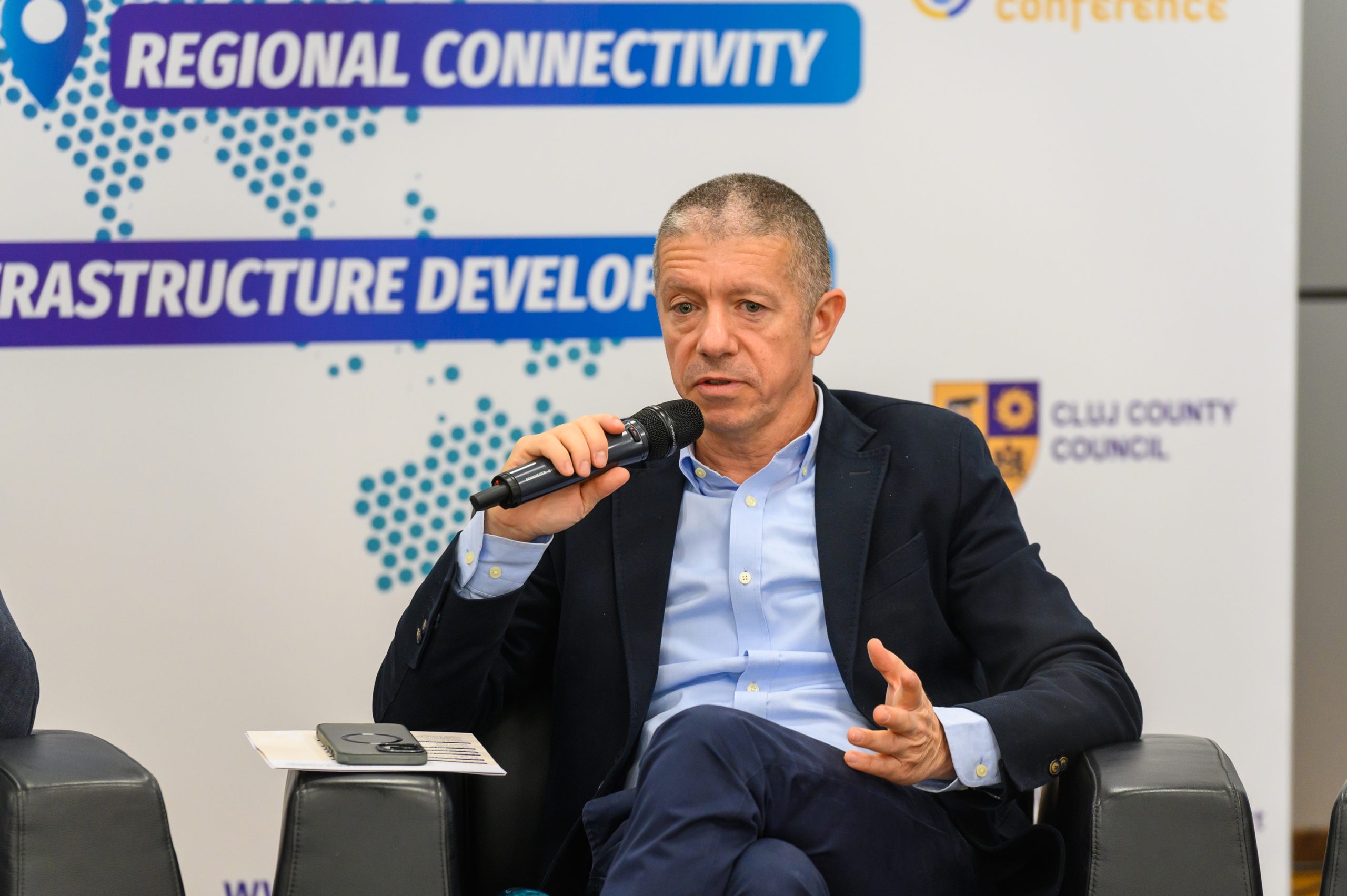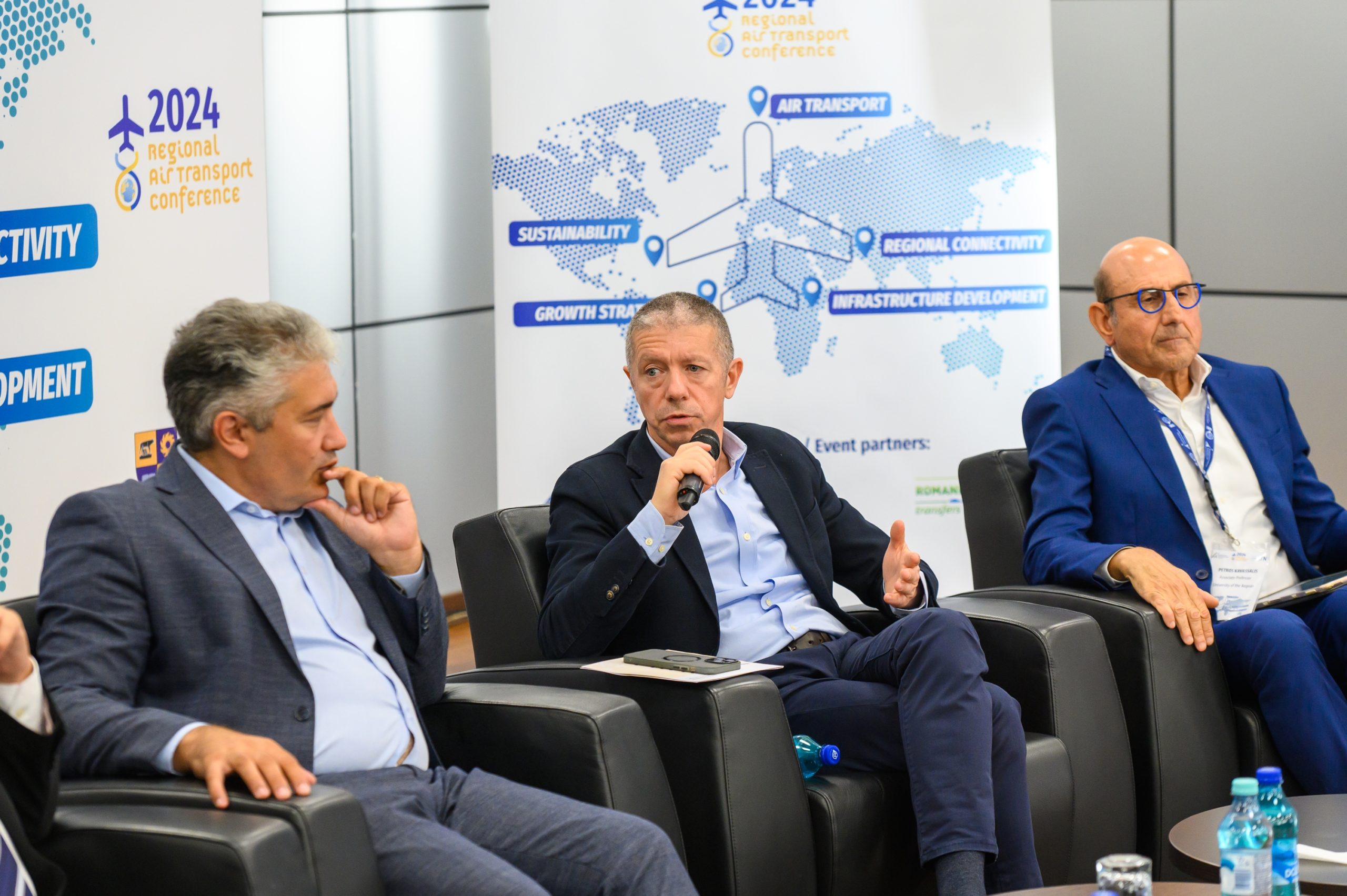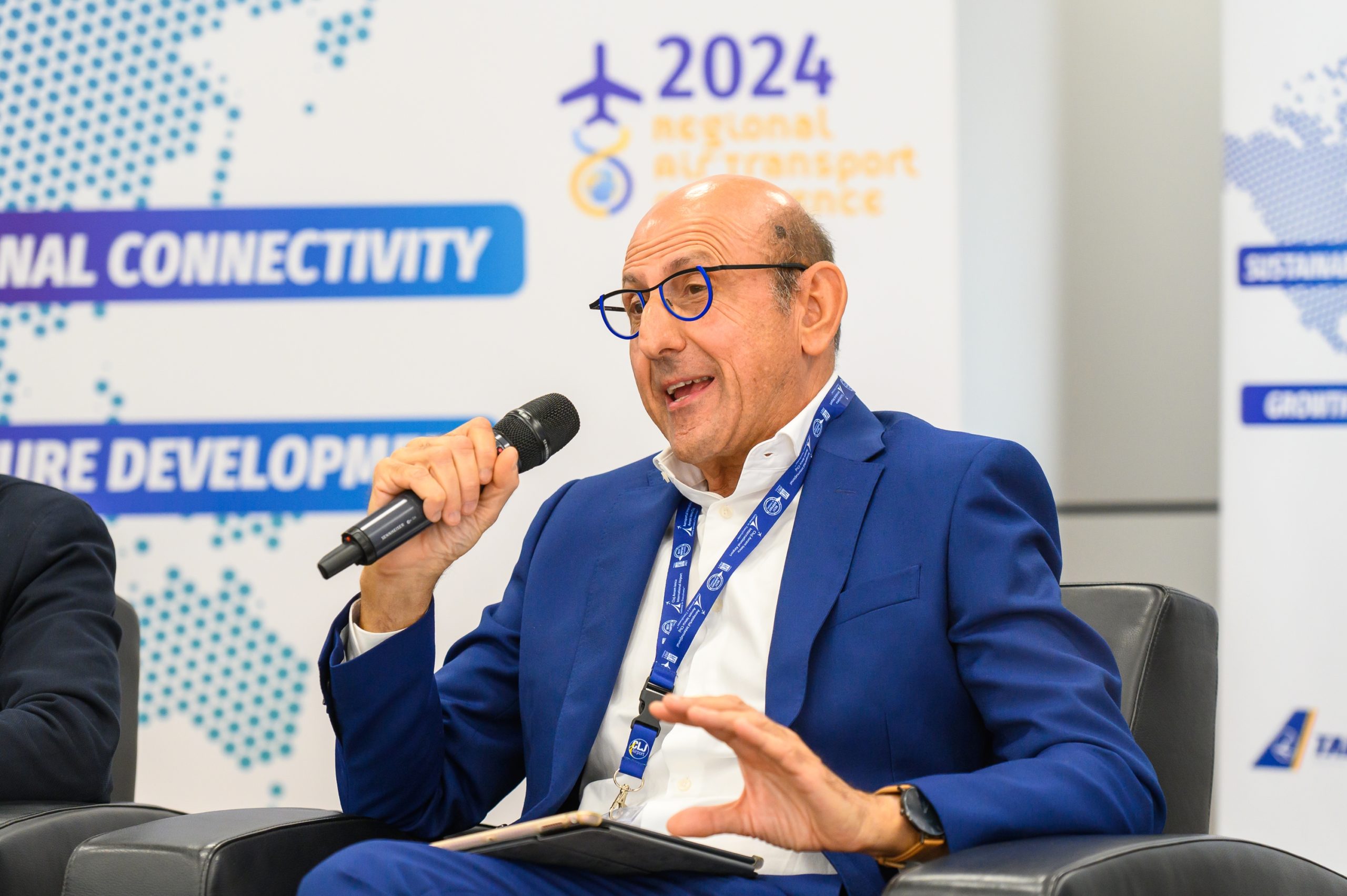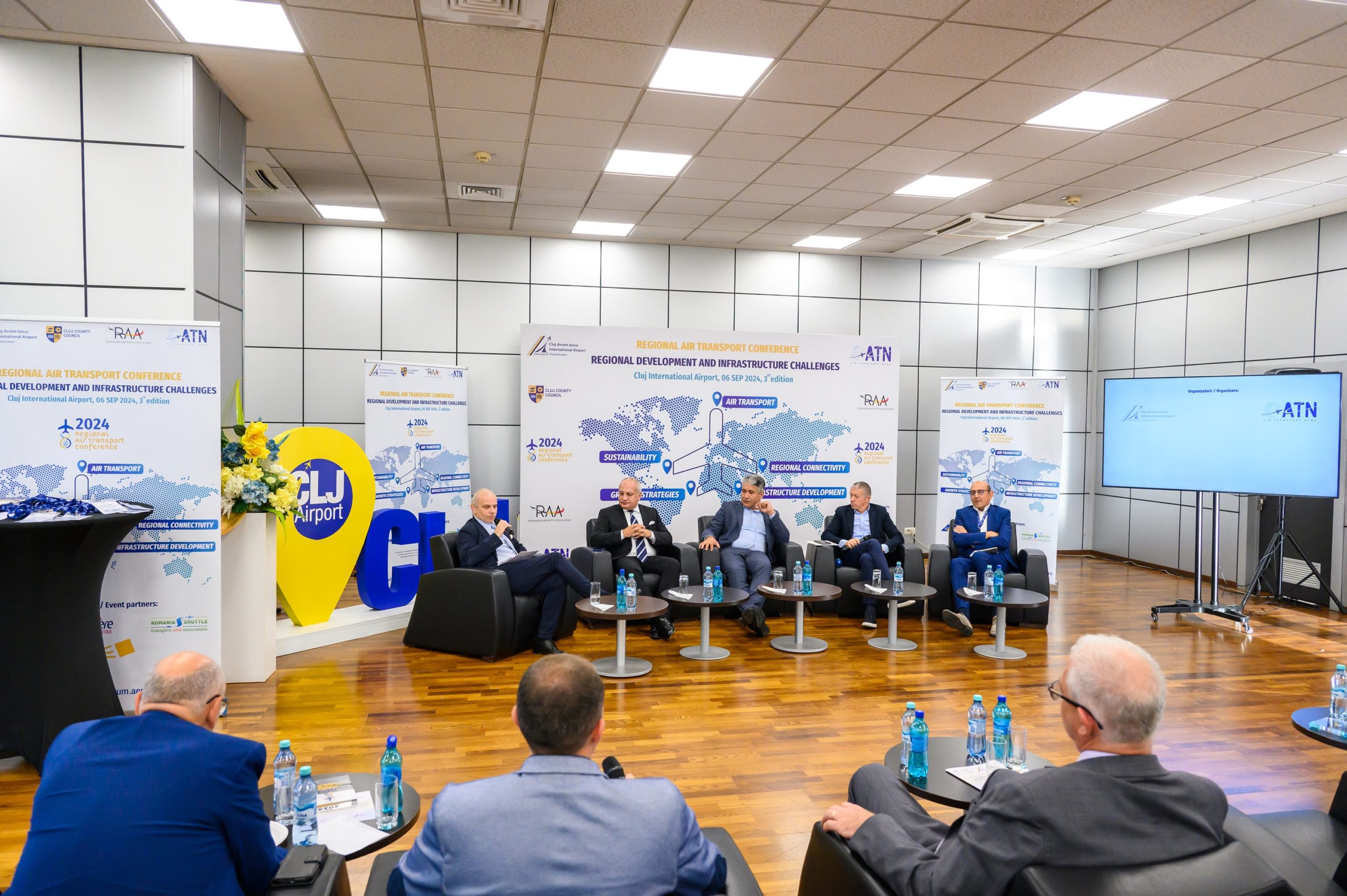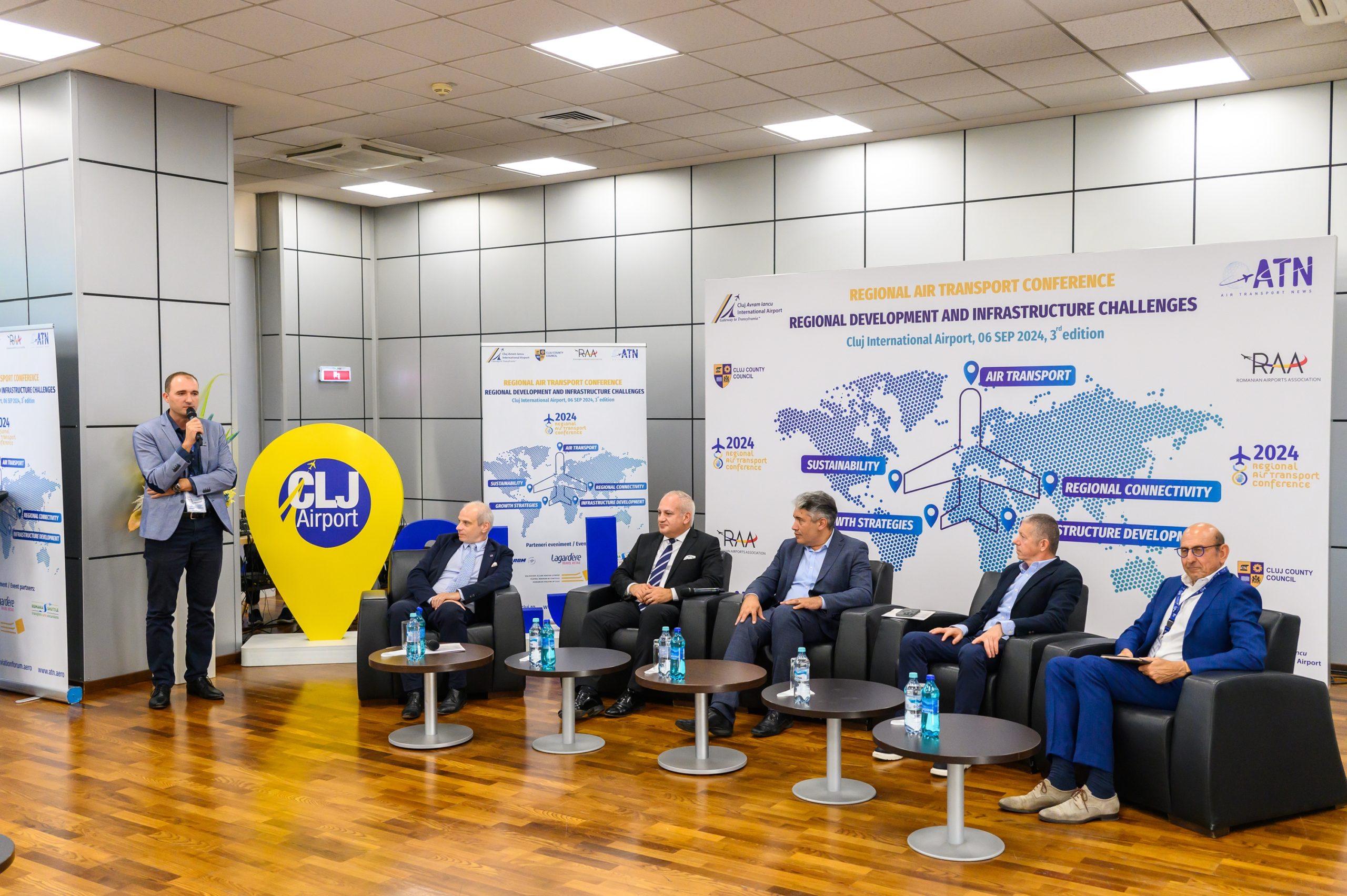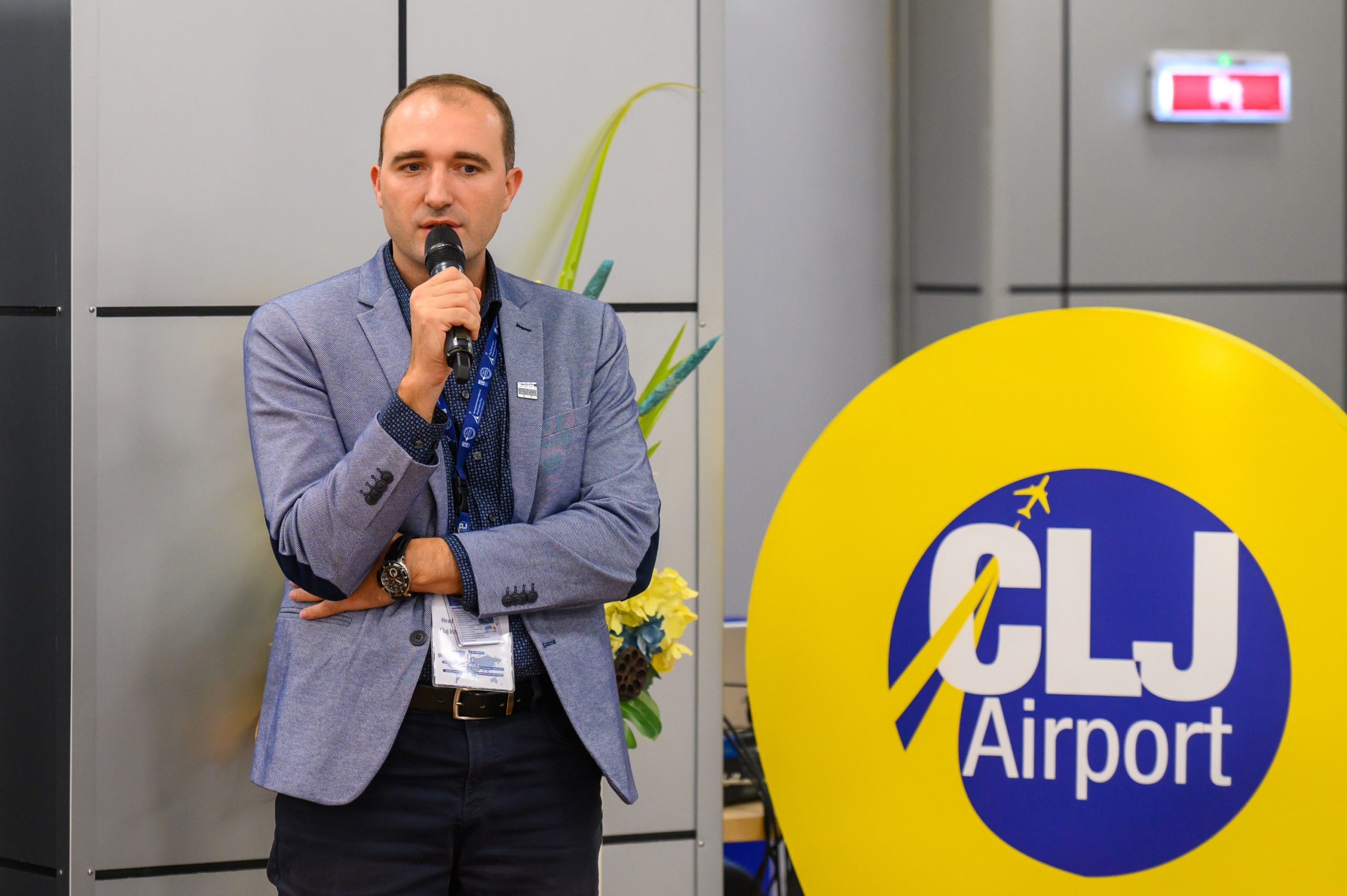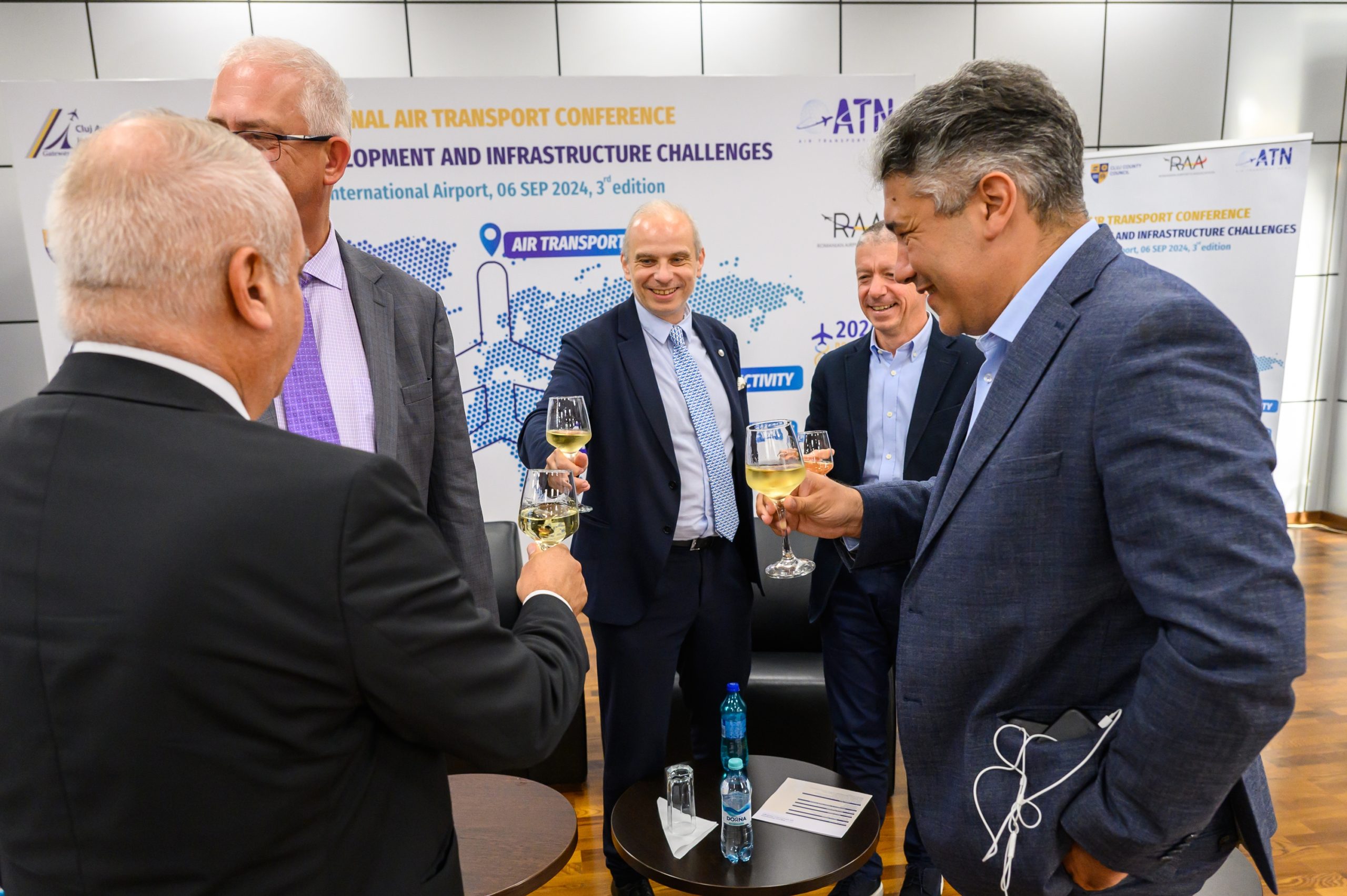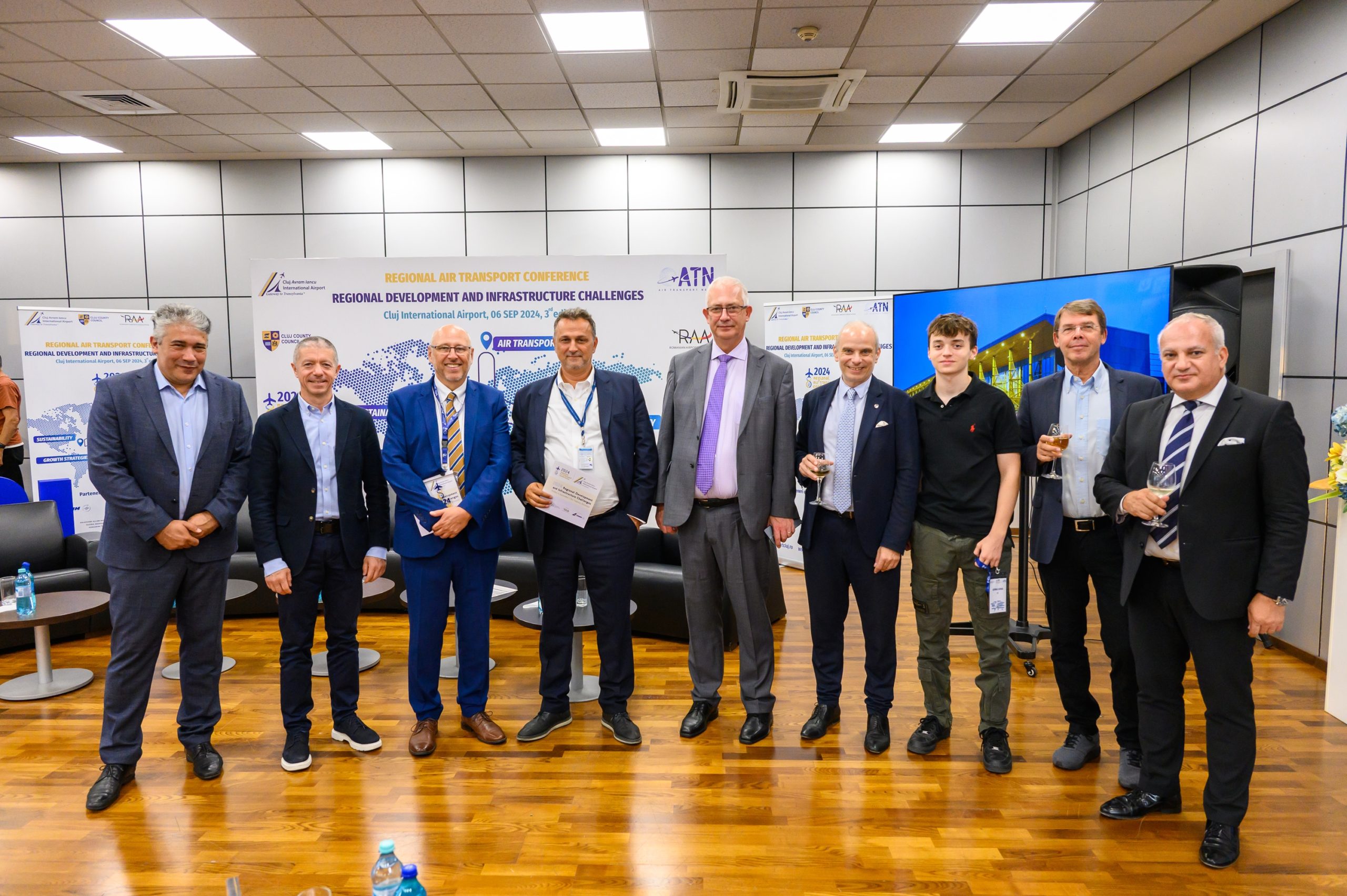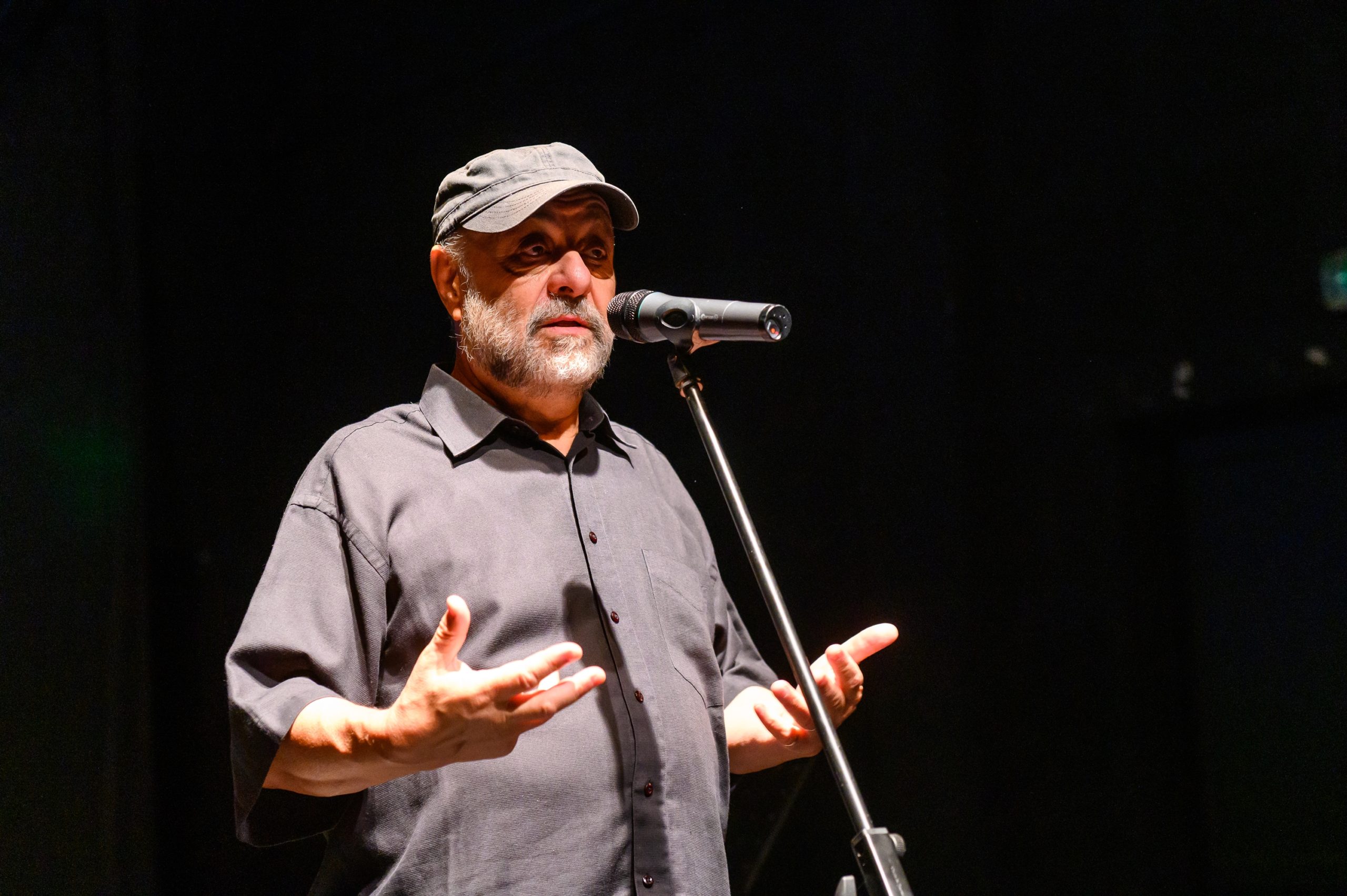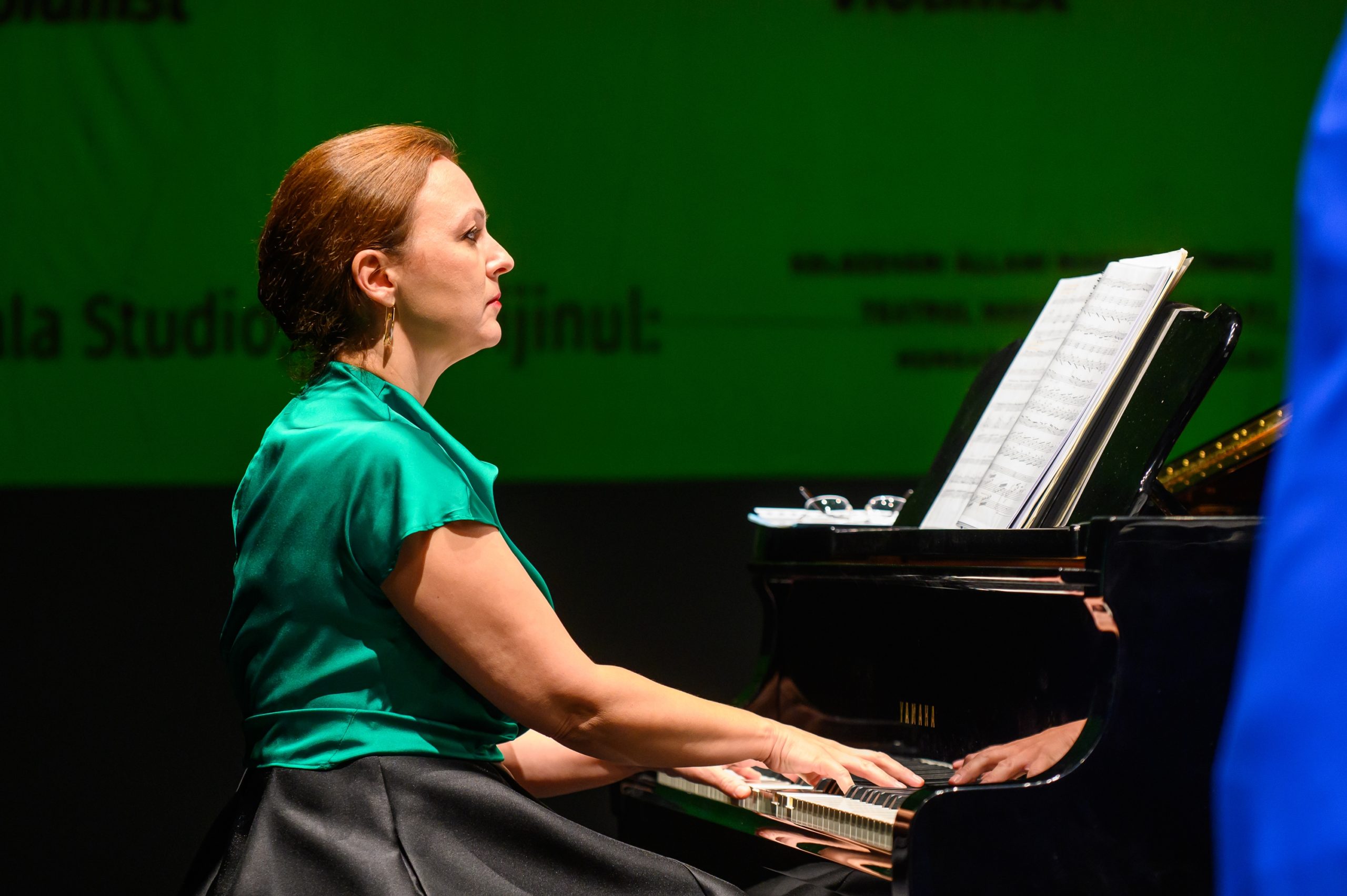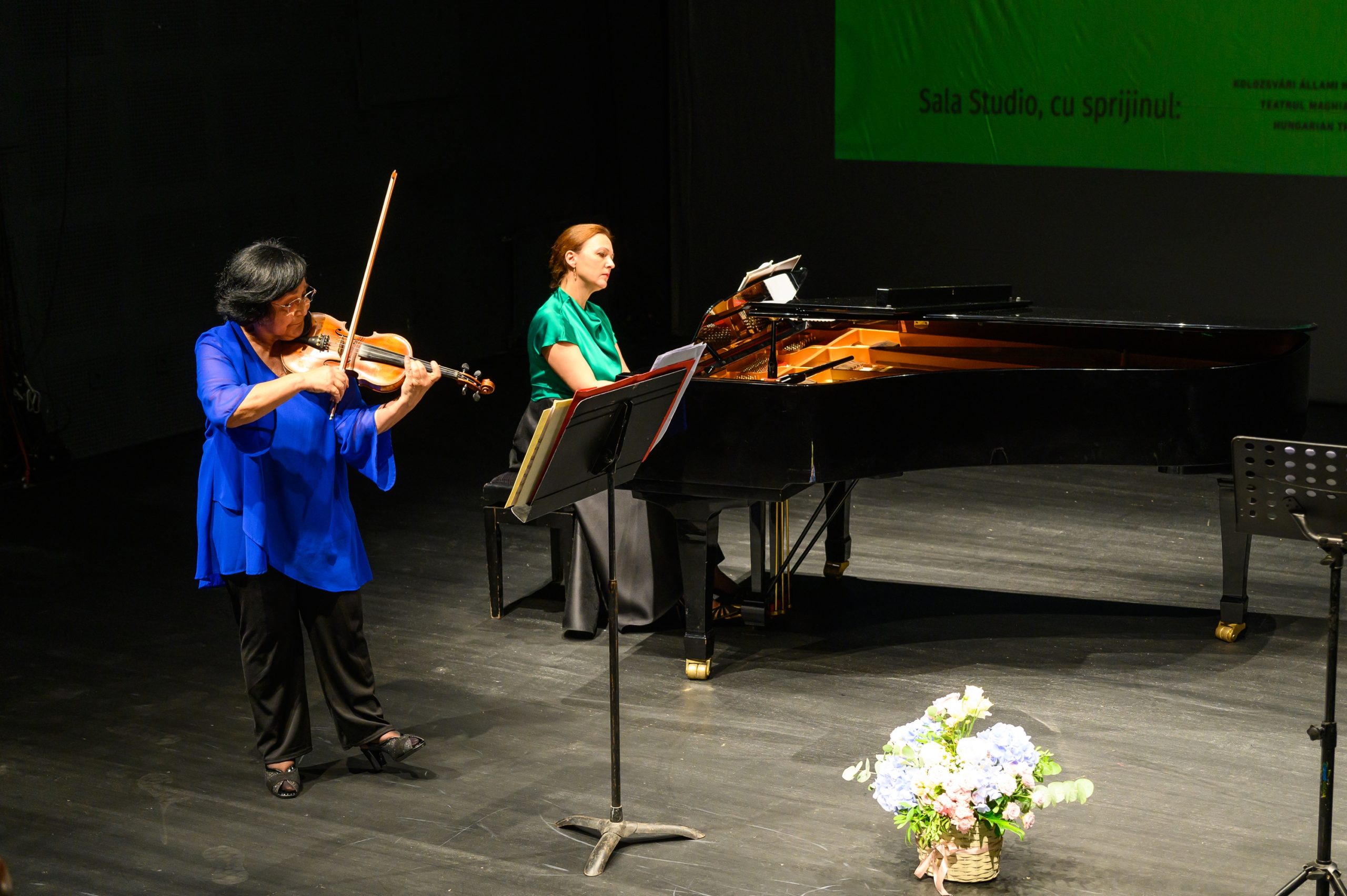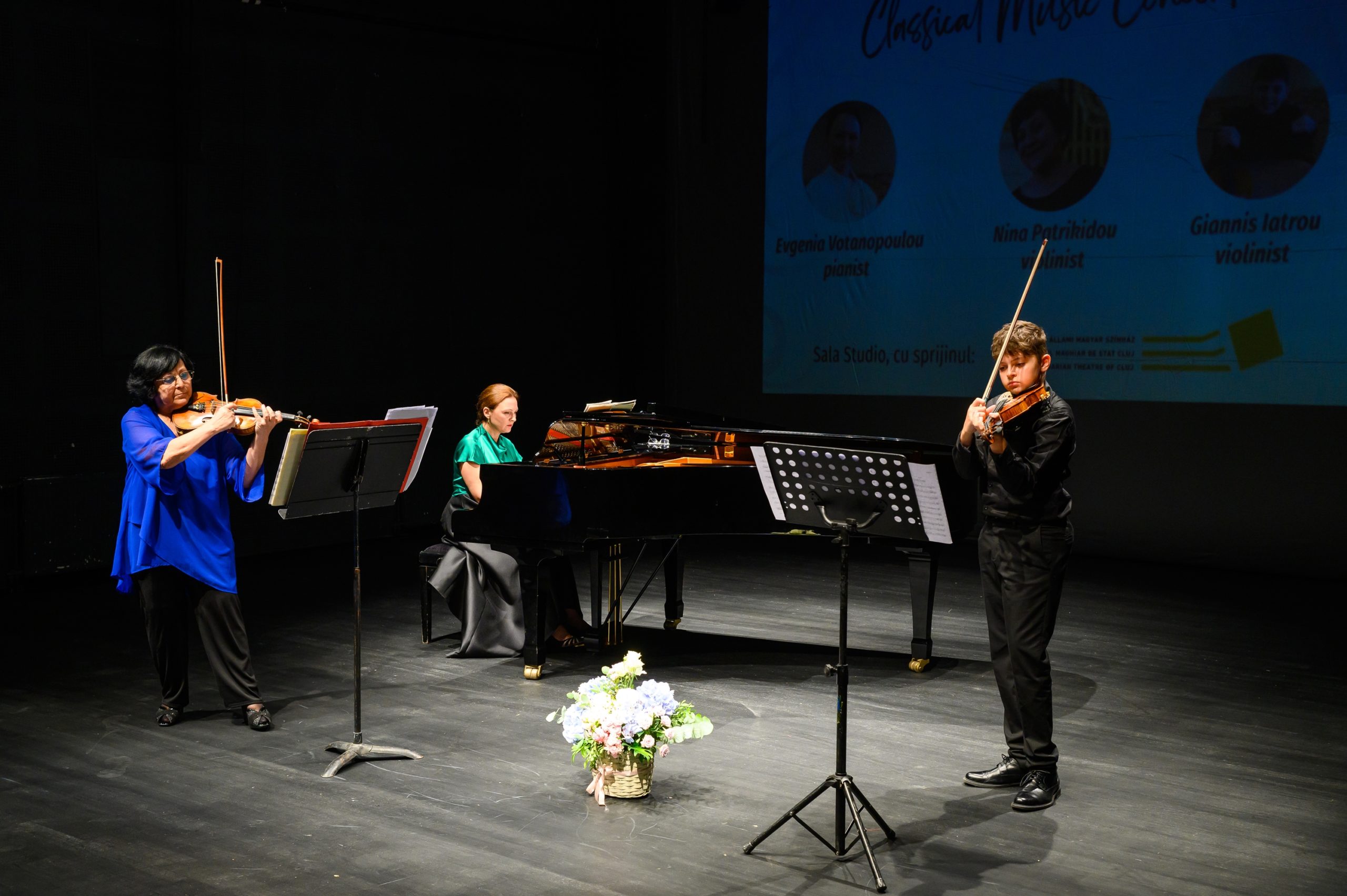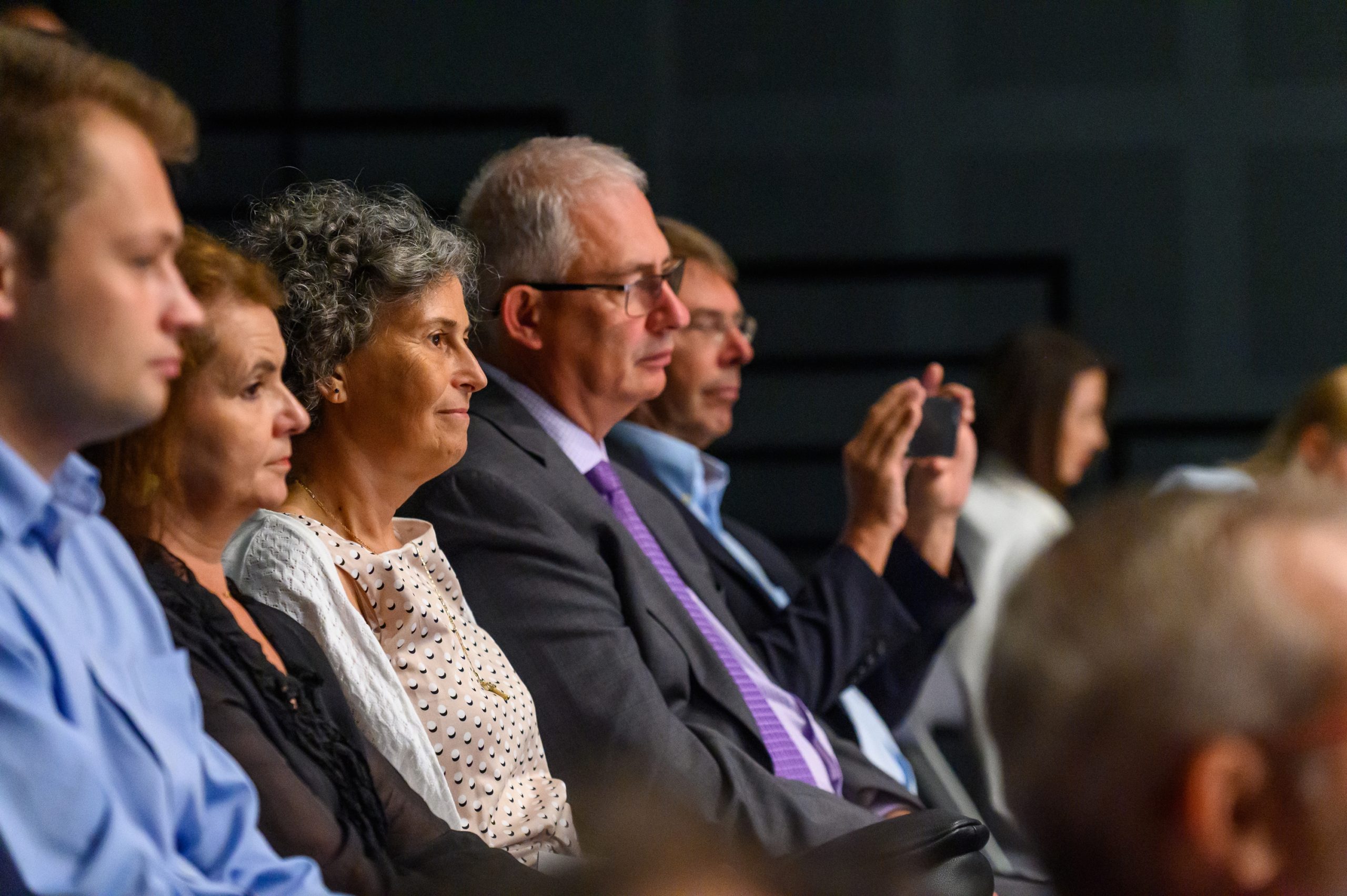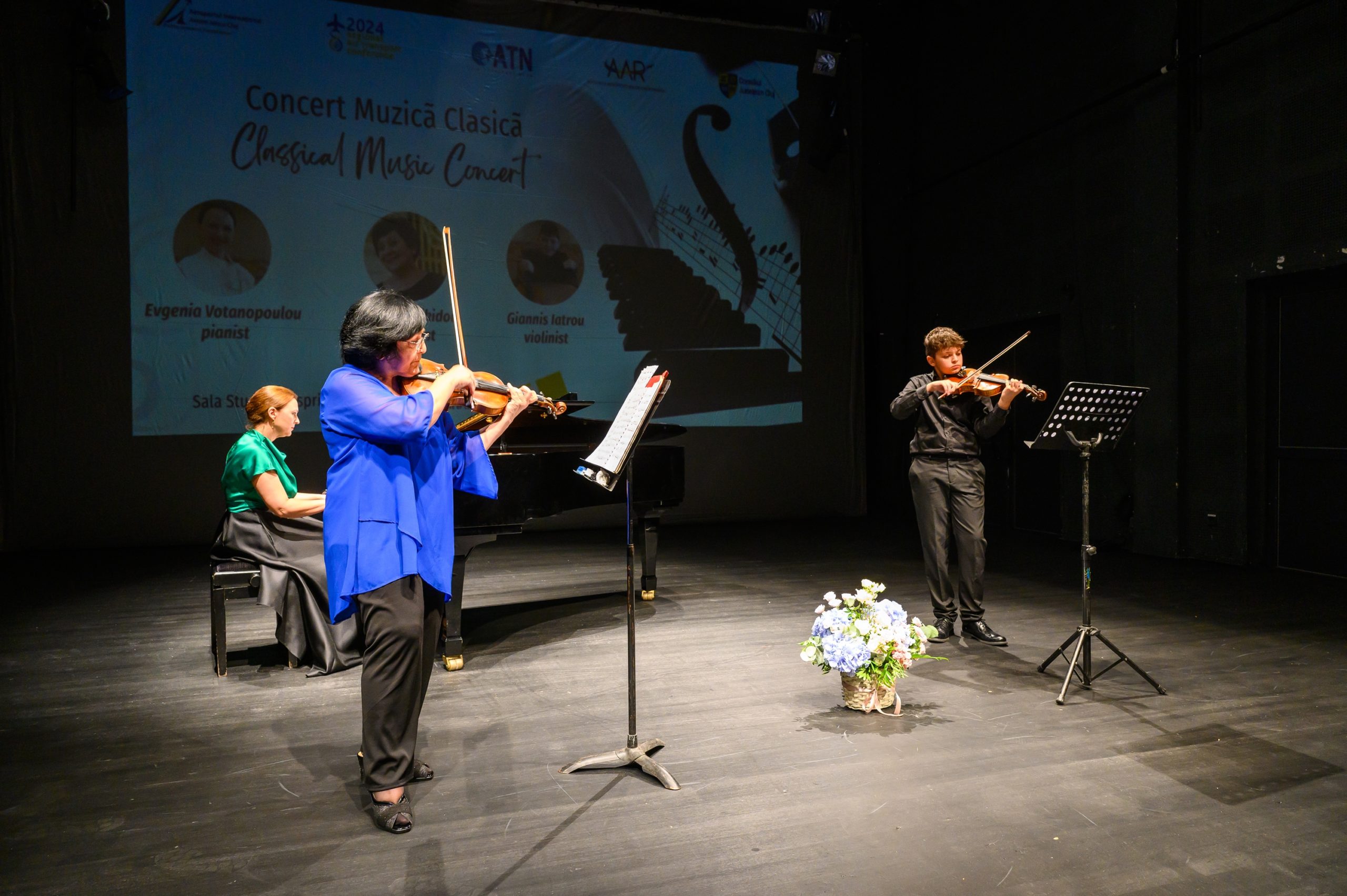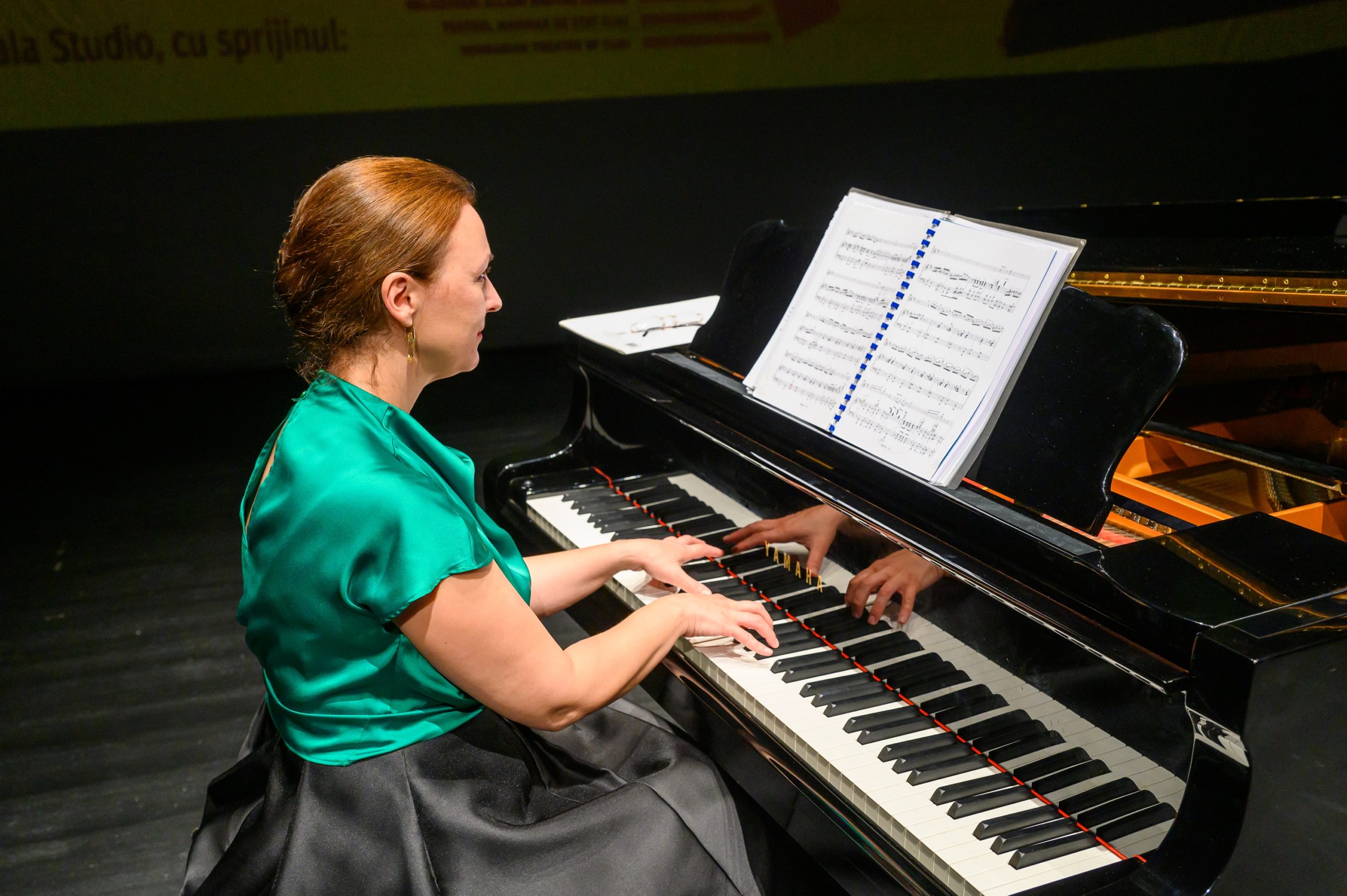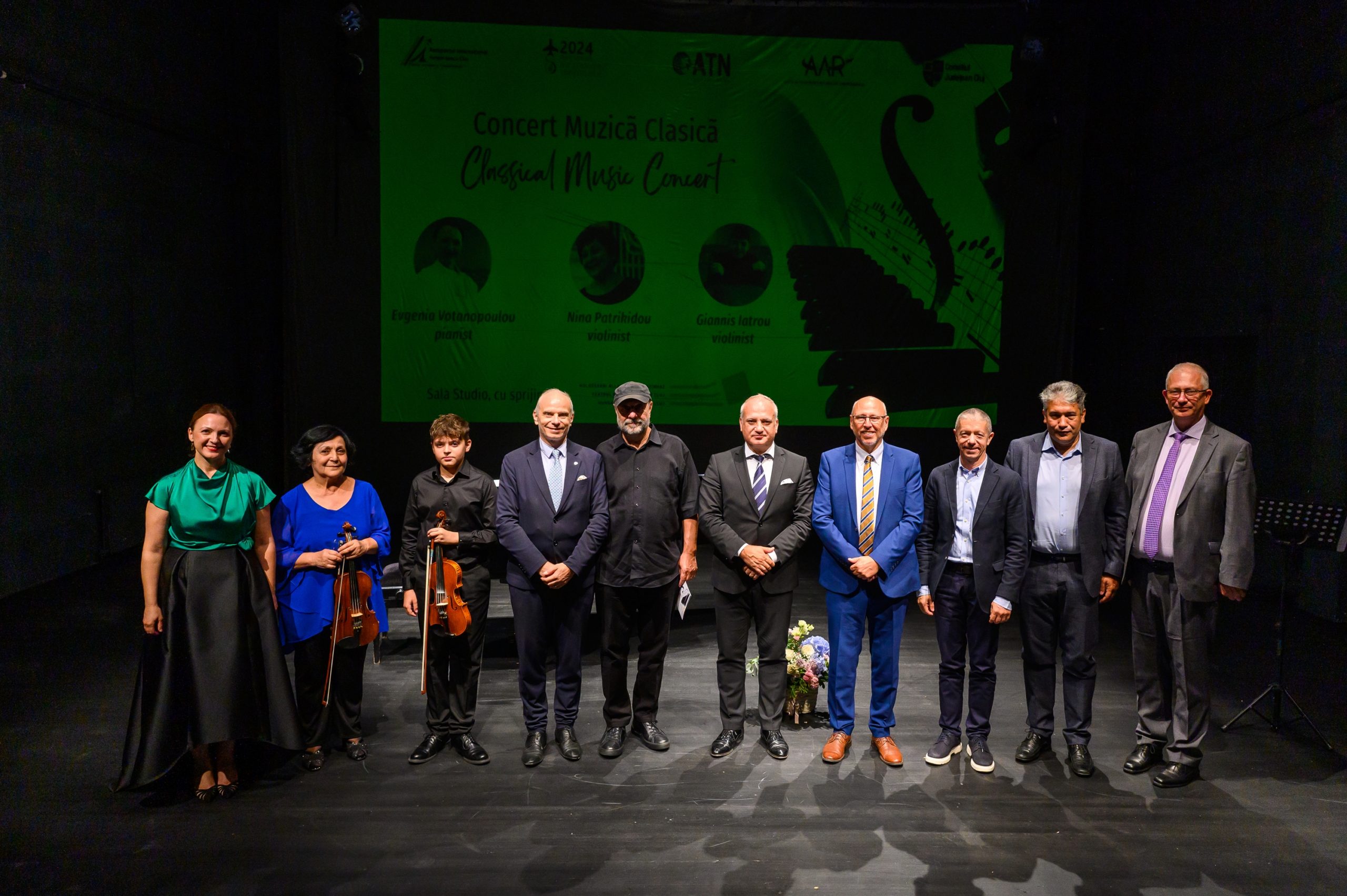
Regional development and infrastructure challenges
Friday 6 September 2024 – Cluj-Napoca, Romania
Master of Ceremonies
Sorin Costaş, Head of Marketing Office, Cluj International Airport
16:00 Welcome Addresses
-Dr Kostas Iatrou, CEO, ATN – Air Transport News
-PhD. Eng. David Ciceo, CEO, Cluj International Airport
16:20 Keynote Address
Glyn Hughes, Director General, TIACA
16:45 Keynote presentation
PhD. Eng. David Ciceo, CEO, Cluj International Airport
17:00 2024 Regional Air Transport Awards ceremony
Organisation Award
Corporate Award
Individual Award
17:30 Leaders panel
Moderator: Dr Kostas Iatrou, CEO, ATN – Air Transport News
-Catalin Radu, Director General, Aviation Administration of Kazakhstan
-Costin Iordache, Director General, TAROM
-Onur Dedeköylü, Chief Commercial Officer, Pegasus Airlines
-Associate Professor Petros Kavassalis, Vice Rector of Research and Innovation, University of the Aegean
18:50 Conclusions
20:00 Classical Music Concert – Studio Hall, Hungarian Theatre of Cluj
Evgenia Votanopoulou (piano), Nina Patrikidou (violin) & Giannis Iatrou (violin)
2130 Gala dinner
International Airport Avram Iancu Cluj hosted the third edition of the one day regional aviation conference «2024 Regional Air Transport Conference – Regional development and infrastructure challenges», in collaboration with ATN – Air Transport News. The one-day conference event held at the airport brought together renowned experts from the international civil aviation industry, representatives of the relevant national authorities and directors of airlines and airports from Europe and Romania to discuss challenges and opportunities in regional air transport, such as infrastructure development, regulations and their impact on regional operations, environmental sustainability, technological innovations in aviation.
Glyn Hughes, Director General, TIACA in his keynote address presented the success of the air cargo sector. He stressed that although air cargo moves only 1% of global cargo in volume, this represents 5% in value. The contribution of air cargo to the entire economy is thus 6 times the contribution of tourism. And this not only in times of crisis such as pandemics or earthquakes when it is air freight that carries temperature-sensitive urgently needed equipment. Air cargo is directly related to the exponential growth of e-commerce, the world’s largest 24/7 shopping mall, in recent years and which is expected to grow another 15% in the following years. The value proposition of air cargo is not the value of the product but the timeliness the customer needs the delivery of the product. This means not only that air cargo evolves according to the global production and customer trends but also that investment in various aspects of infrastructure are needed to support the exponential growth of e-commerce.
Dr. Eng. David Ciceo, CEO, Cluj International Airport , in his address stated that Rumania has 17 airports open to international traffic with traffic increasing significantly since 2007 the year of liberalization of air traffic and the end of bilateral agreements. In Cluj airport in 2023 there was increase both of passengers and of available seats, up 11% compared to 2019 and 23% more than 2022. Cluj International Airport with the EU Large Infrastructure Operational Program for regional airports has implemented infrastructure improvements from safety and security to runways and aprons. Data for 2023 and 2024 shoe that 935 is international traffic and only 7% domestic traffic, 90% scheduled flights, 83% operated by foreign carriers and 16.2% by national carriers, 50 airlines, 50 routes to 20 countries, with 9 of them being hubs. The most popular destination is London since there is in the city a large Romanian community. This year airlines have been facing problems because there are not enough planes on the market and late deliveries and engine problems. He ended up by saying that according to the 2040 forecasts there is huge growth potential reaching 77 million passengers, which will entail upgrading once again infrastructure, expand terminals and runways to cater for increased capacity demands.
The Leaders Panel was moderated by Dr. Kostas Iatrou, CEO, ATN – Air Transport News, with panelists being Catalin Radu, Director General, Aviation Administration of Kazakhstan, Costin Iordache, Director General, TAROM, Honor Dedekoylü, Commercial Director, Pegasus Airlines and Conf. Univ. Dr. Petros Kavassalis, Vice Chancellor for Research and Innovation, University of the Aegean. The panelists agreed that the major challenges to support regional airports and promote regional connectivity are the proper liberalized regulatory framework, proper technology-driven infrastructure, a proper tariff system and seasonality. Liberalization and consistent uniform harmonized safety and security measures on a regional level, at least, will help both the development of traffic and airports and will improve the passenger experience. It was pointed out that within Europe 50% of European connectivity is created by peripheral airports stressing the role of regional airports for the economy of the communities and European cohesion. Regional airports have to deal with an unprecedented rate of traffic growth but on a seasonal level while they have also to deal with speed of new technological developments. Seasonality means that they cannot take advantage of economies of scale, but at the same time their small size gives the opportunity to “experiment” through pilot programs and adopt selectively innovative cost effective digital programs focusing on the accelerating the speed and efficiency of handling passengers, luggage and travel documentation. To lessen seasonality airports need to increase their catchment area to stimulate and build local demand and for that they need to work together with the hotel and the whole tourism ecosystem. Passengers prefer direct point-to-point flights and look for a mix of the product-price, arrival, departure times and connectivity are more demanding in terms of convenience of travelling and speed of procedures. Faster procedures mean that passengers will have more time to spend more time in the commercial areas of the airport. The fast service of the passenger and increase of capacity increases the value of the airport and this will attract more airlines to the airport. Airports must seek alternative modes of investment and investors will come when they see the potential of growth and the added value. As it was stated “the first million passengers” is difficult. It was pointed out that regional airports must offer multi modal –bus, road and train- connectivity to attract passengers and airlines. With the development of e-commerce and air cargo moving away from the concept “close to the point of production” and adopting the concept “how close and quick it can get to the customer” regional airports acquire a new role within the European freighter network. Another point raised was although airports and airlines are dependent on each other there is at the same time a conflict of interests as airports need many airlines to increase competition and airlines want low charges and infrastructure improvements mean increase of charges. The panelists called airports and airlines to brain storm and exchange accurate date so as to integrate their future growth plans and adopt a long term overall strategy. They also called for the increase of production and distribution of SAFs.


